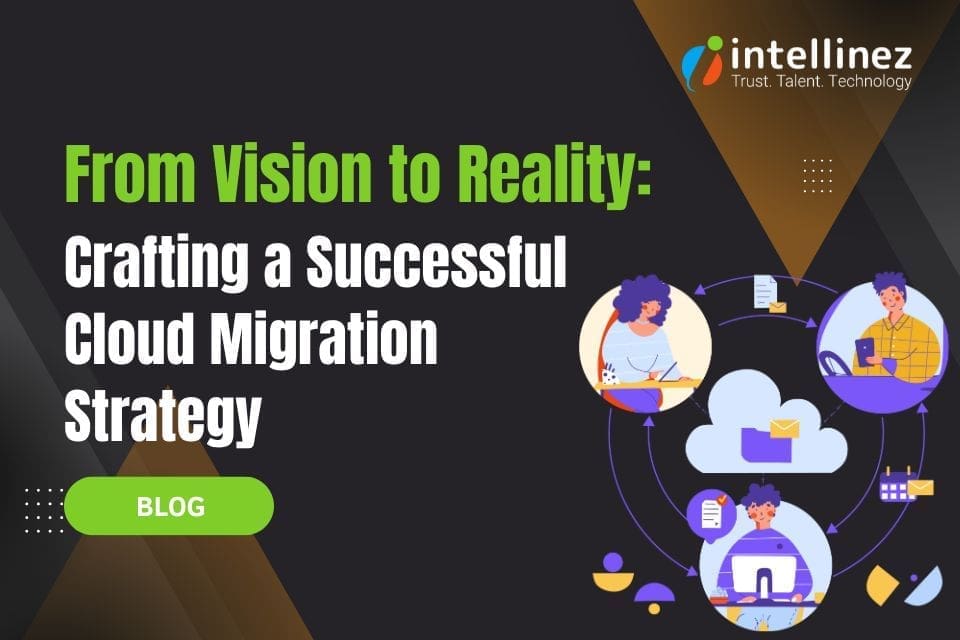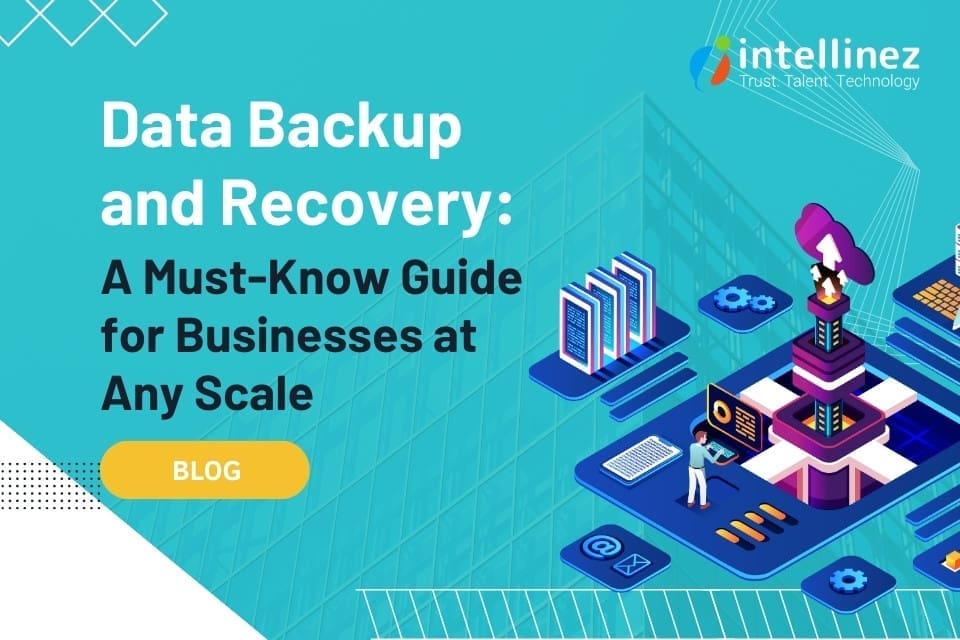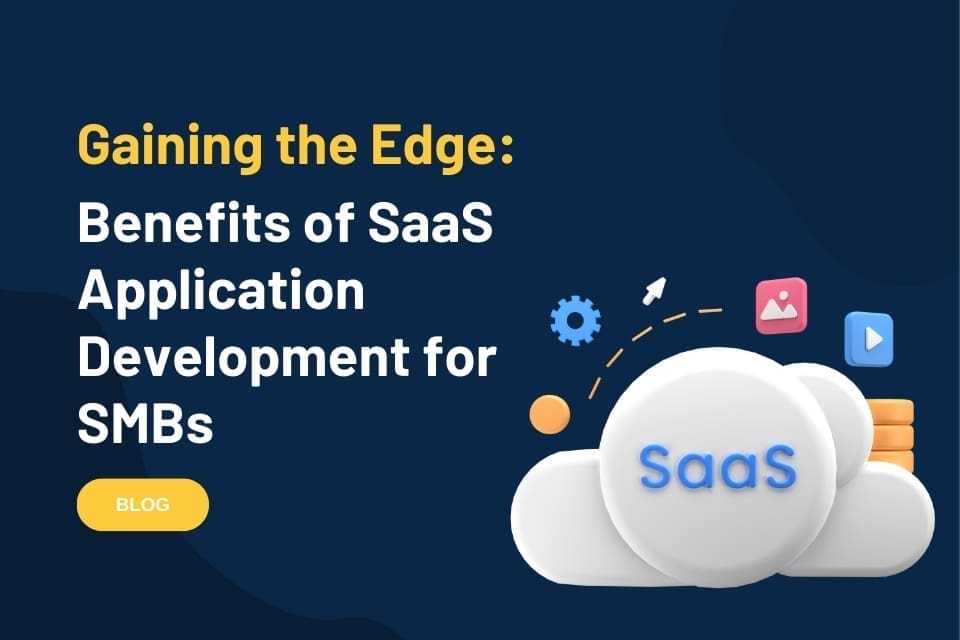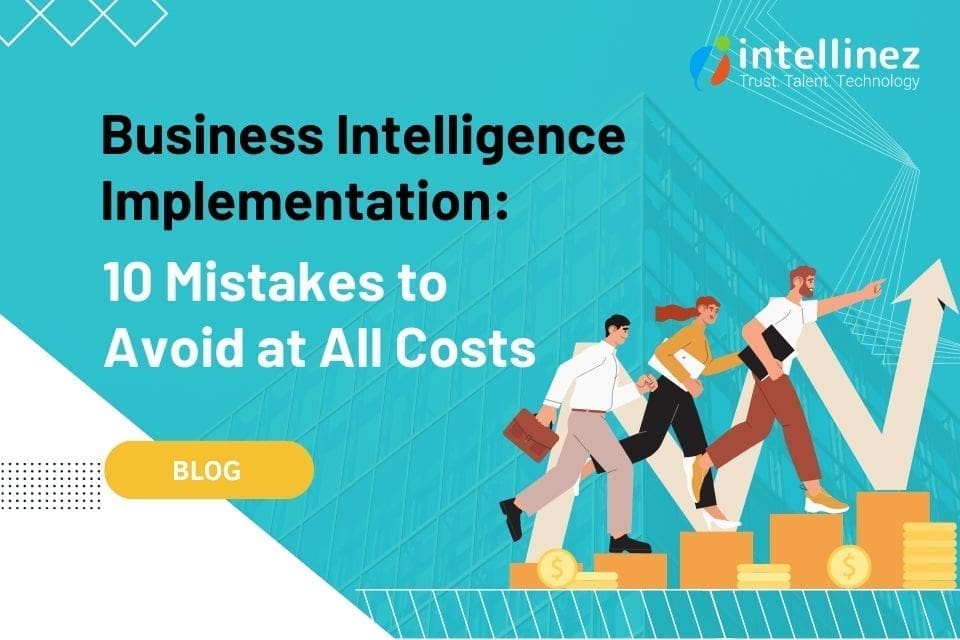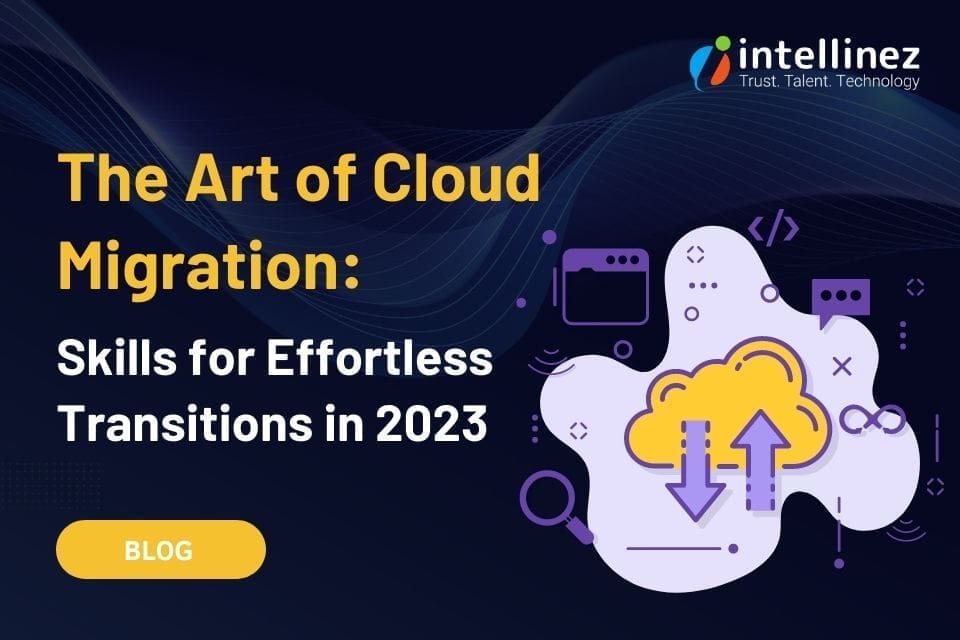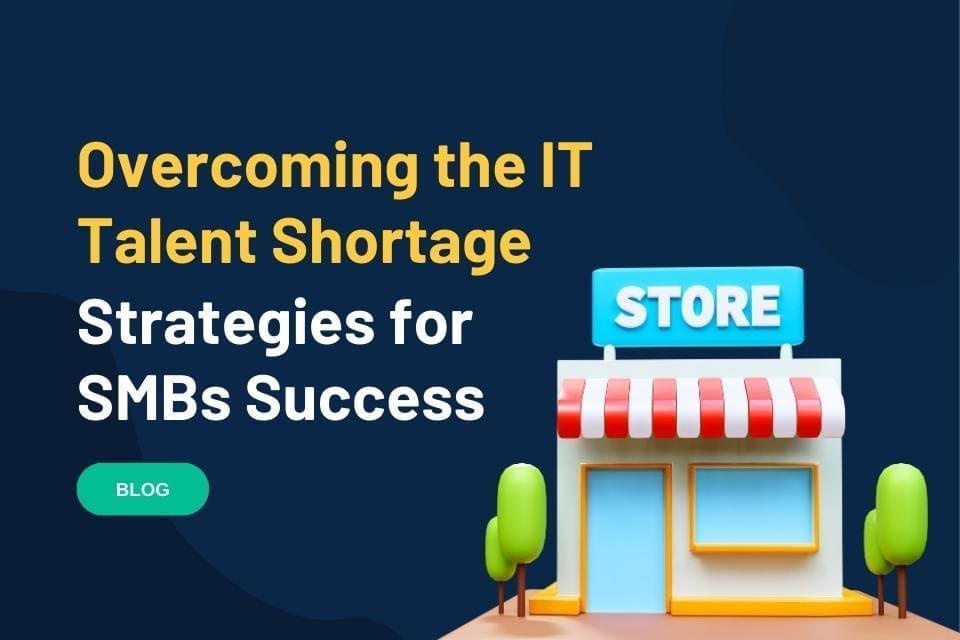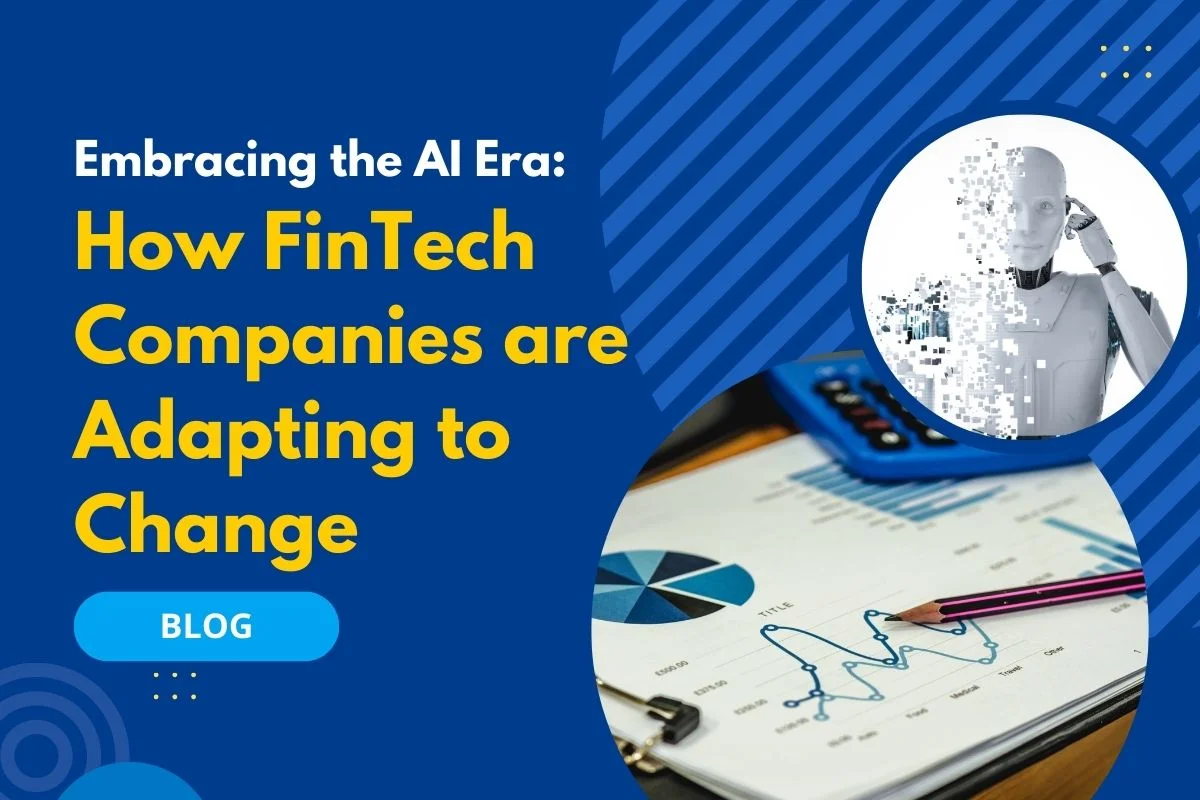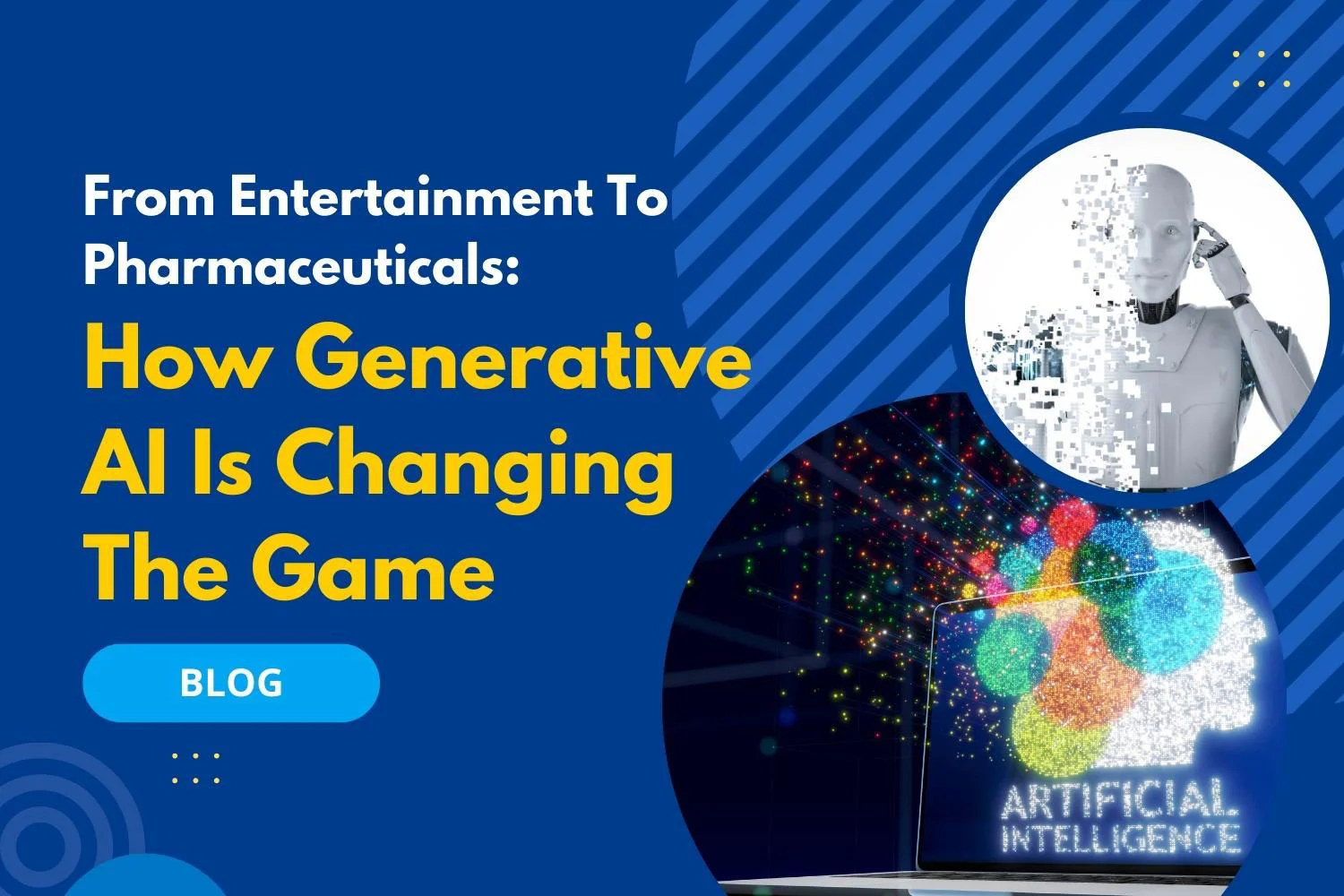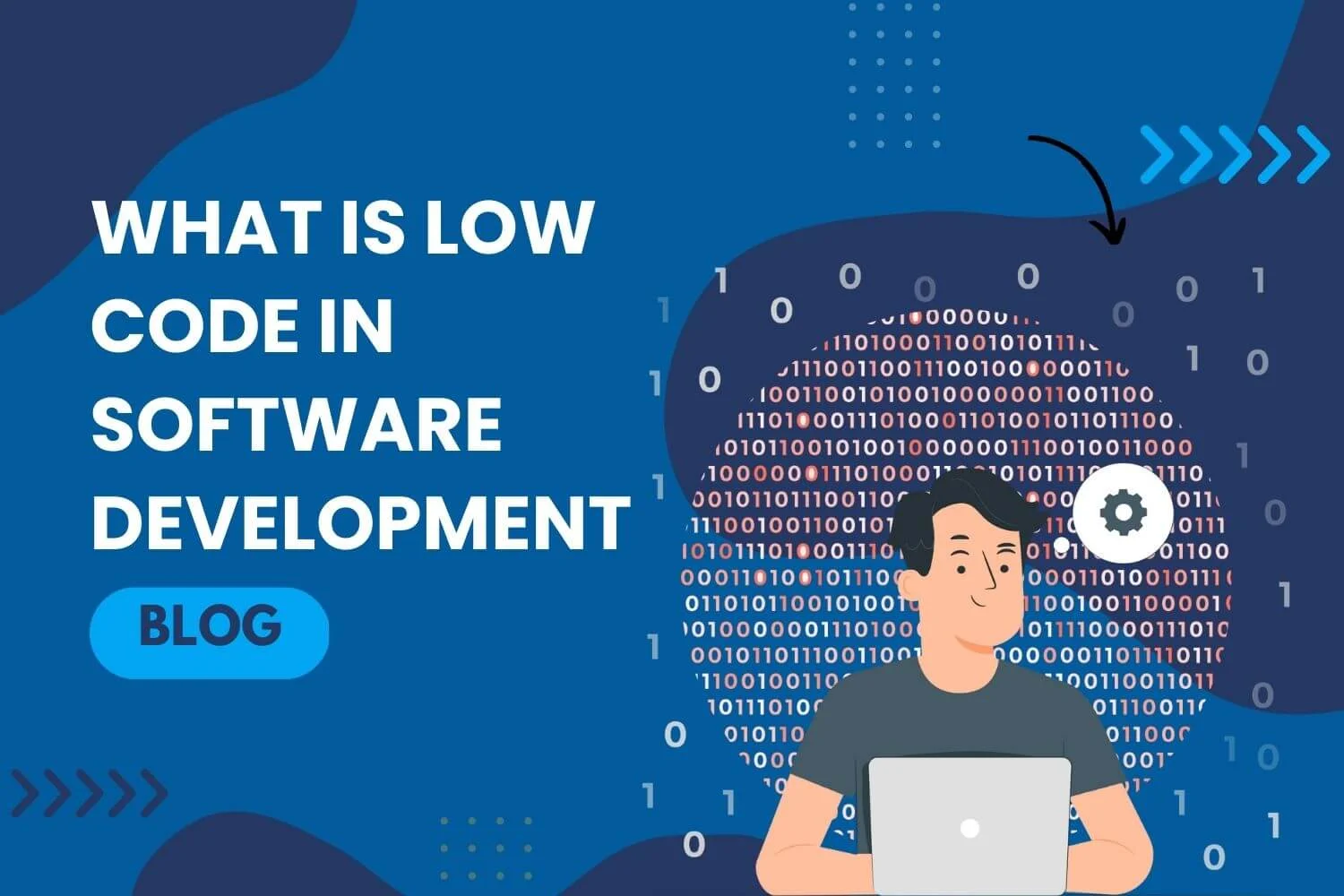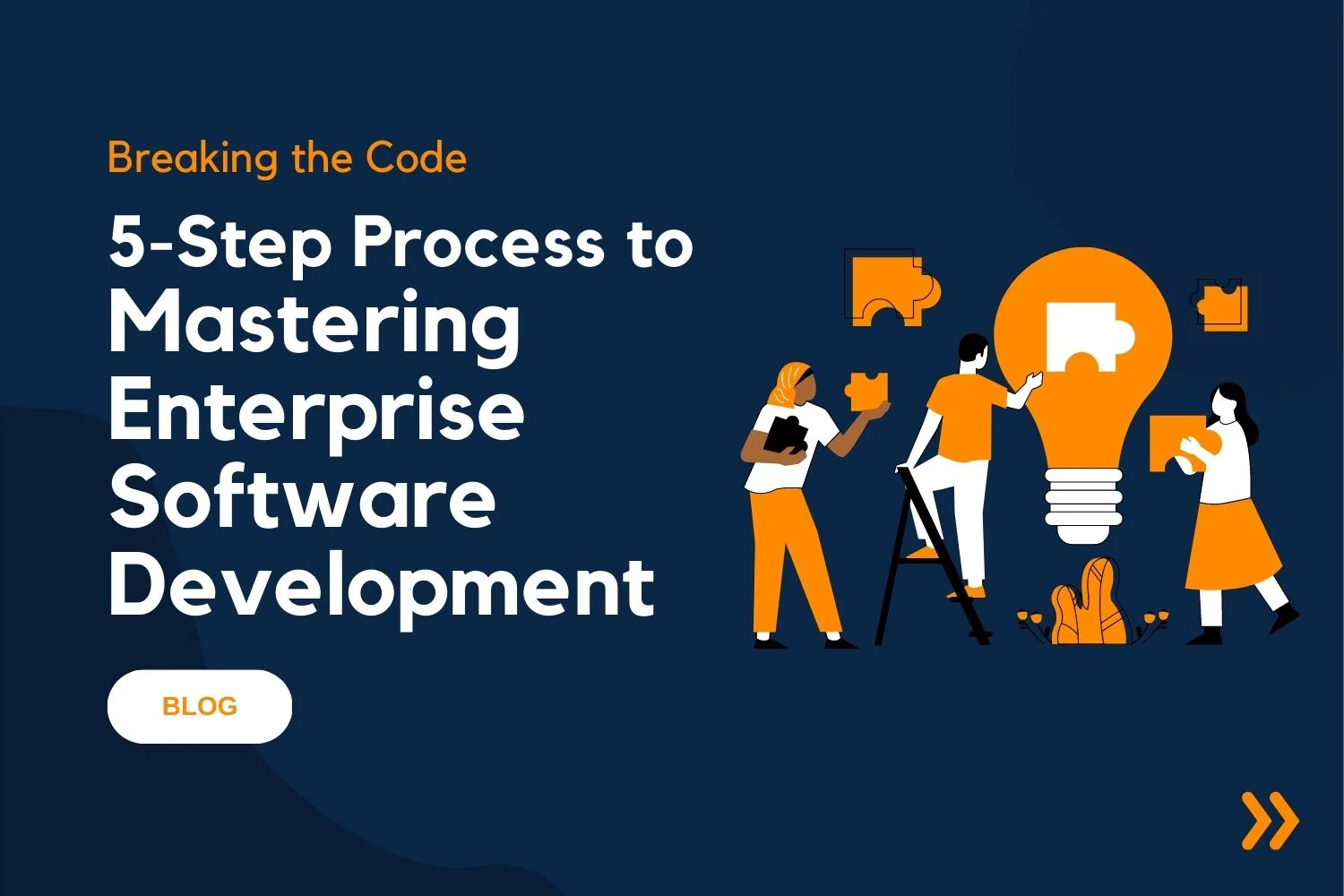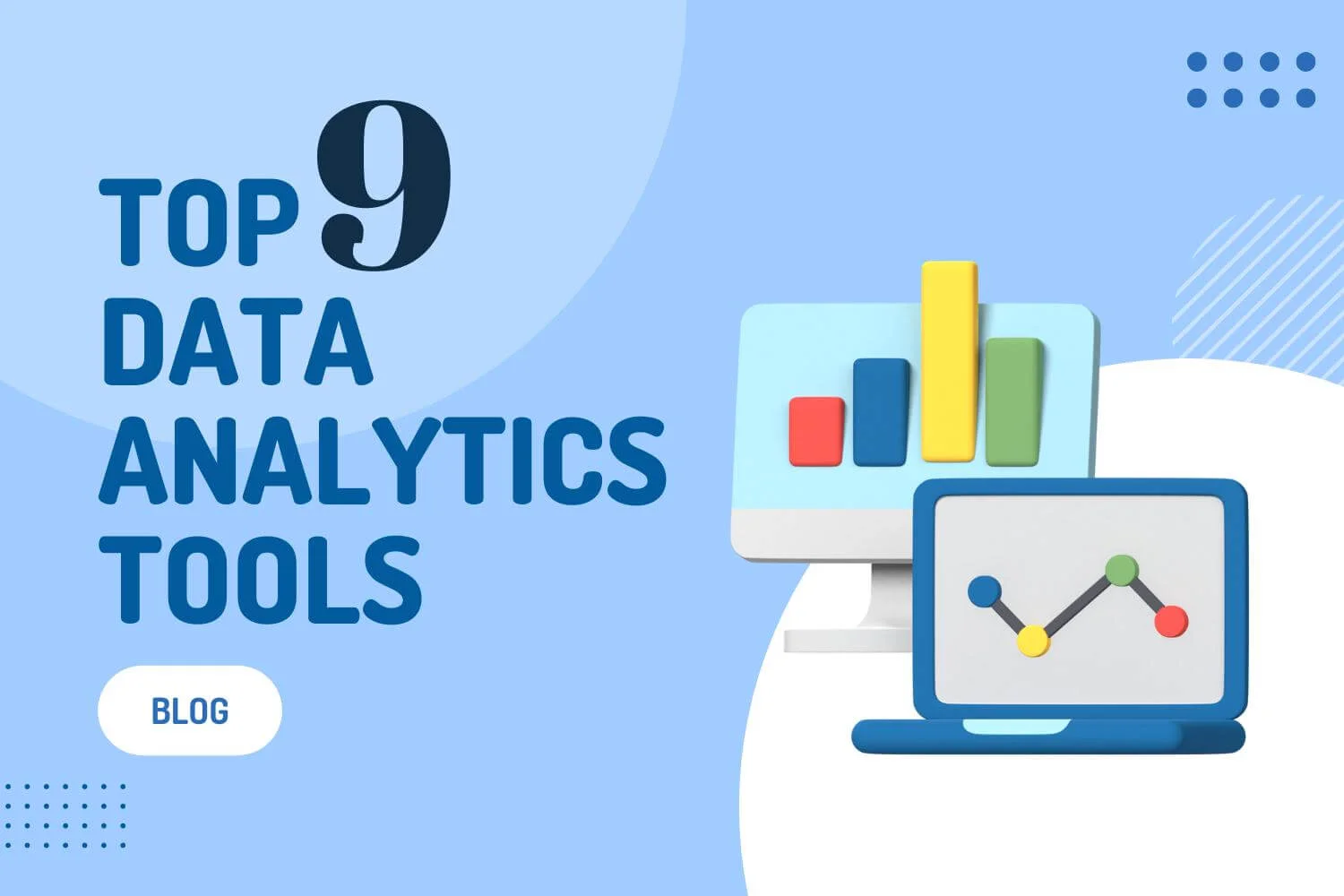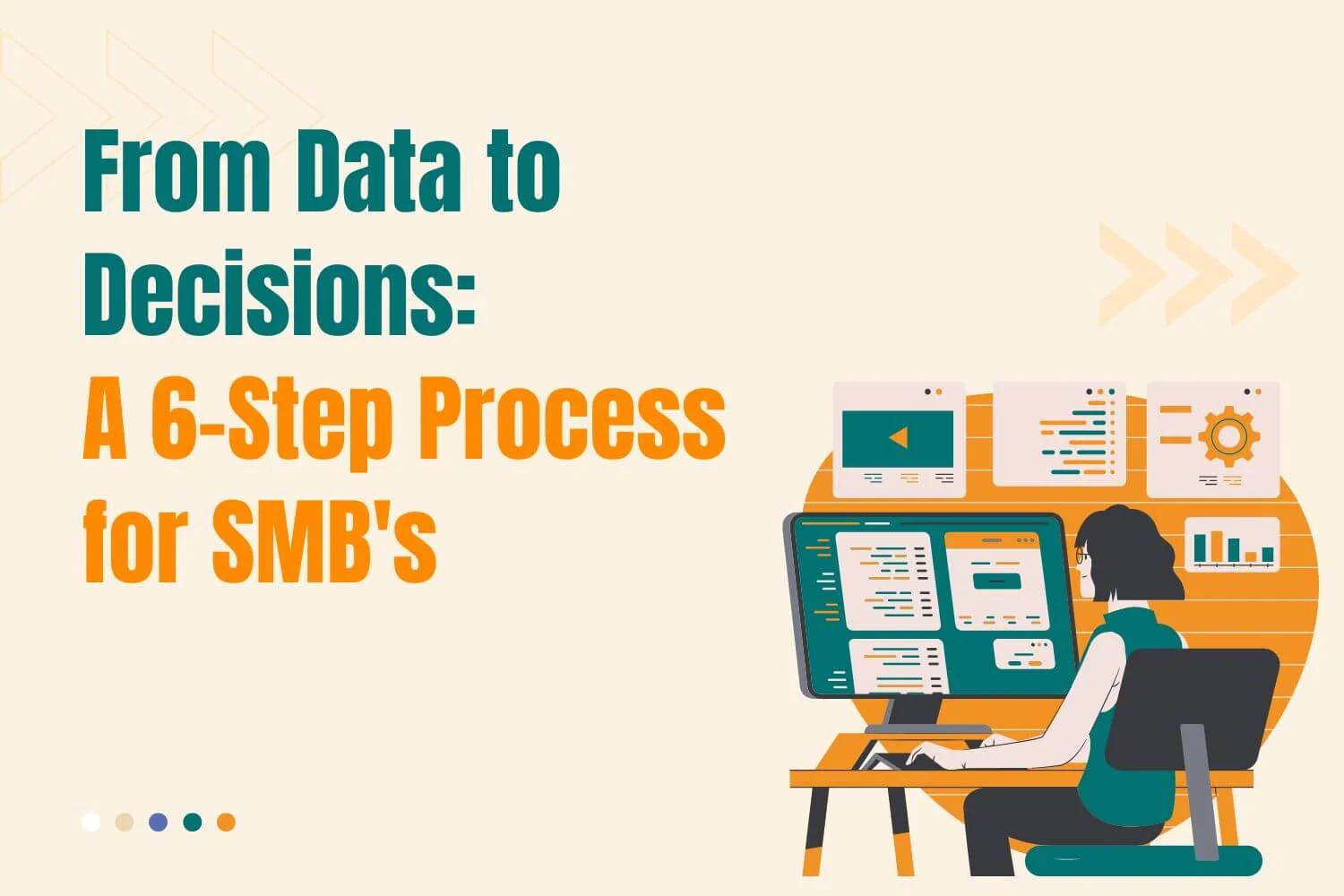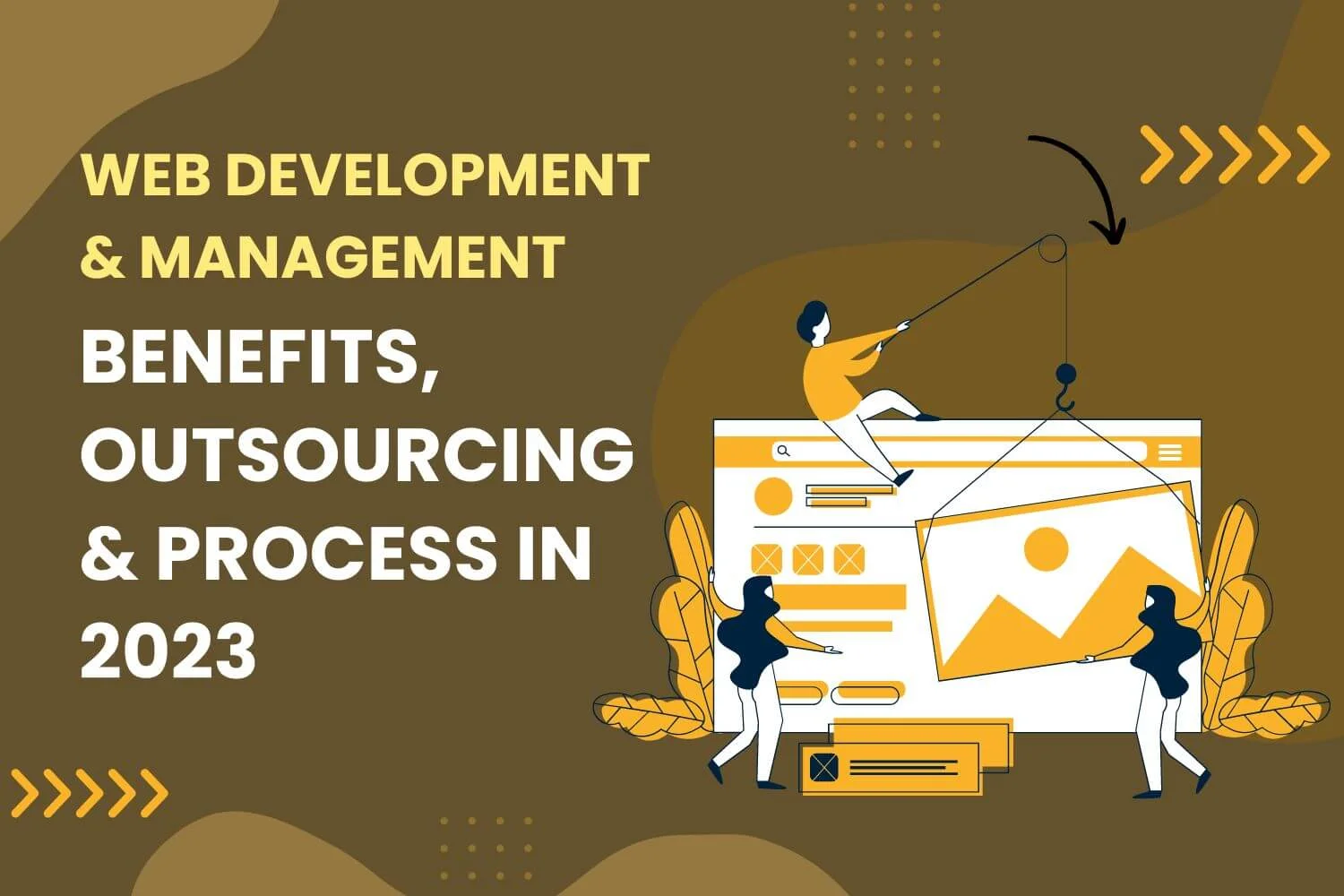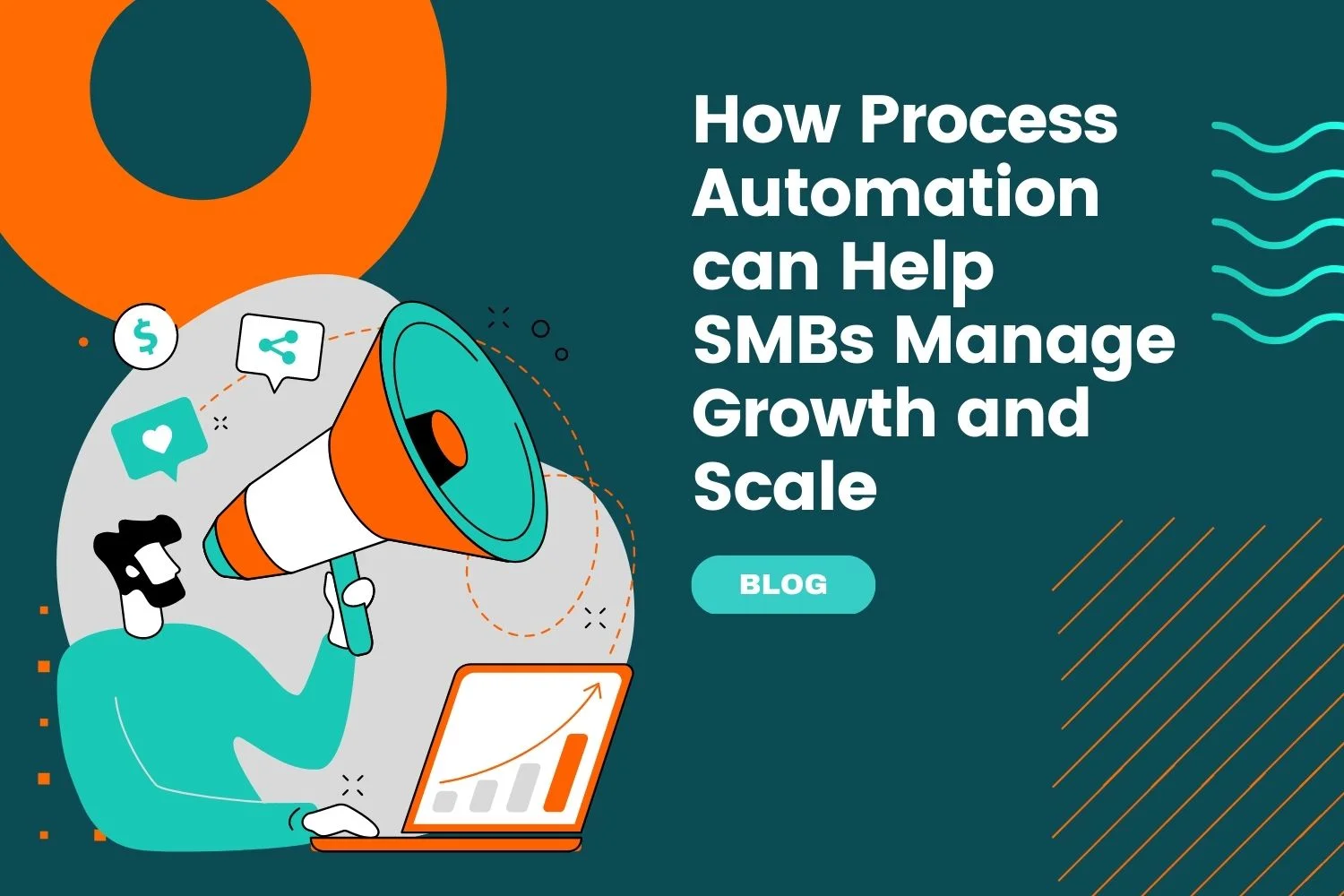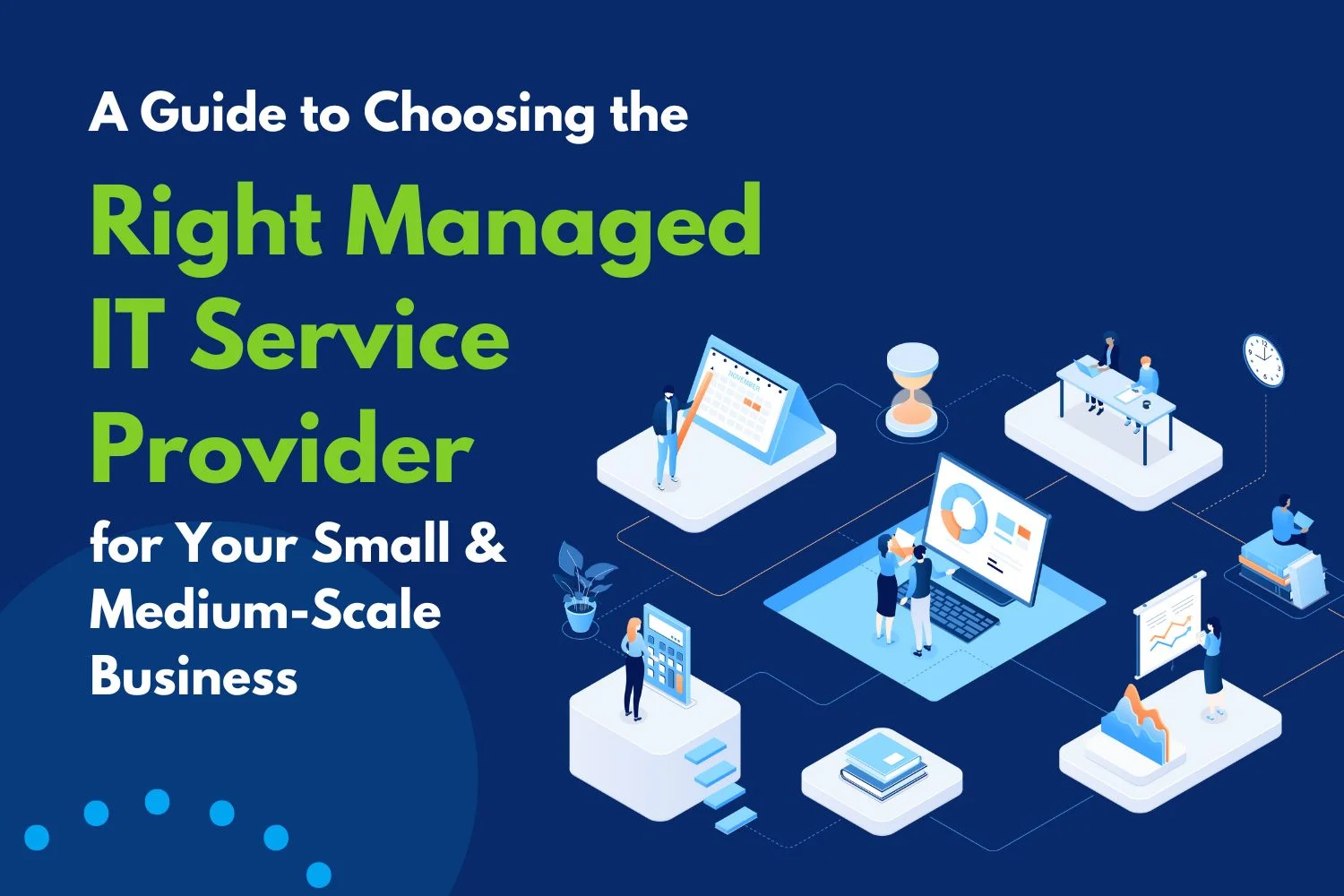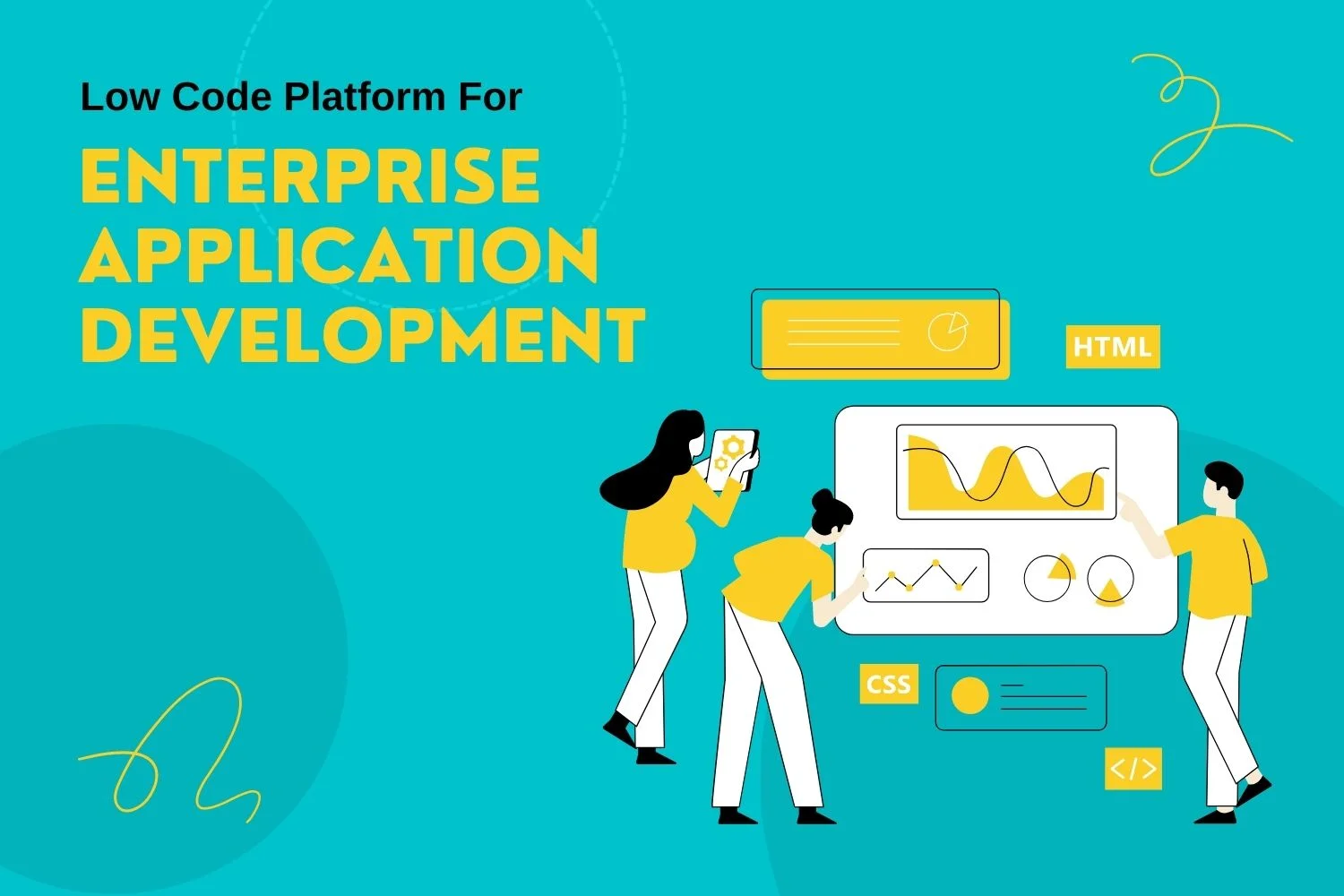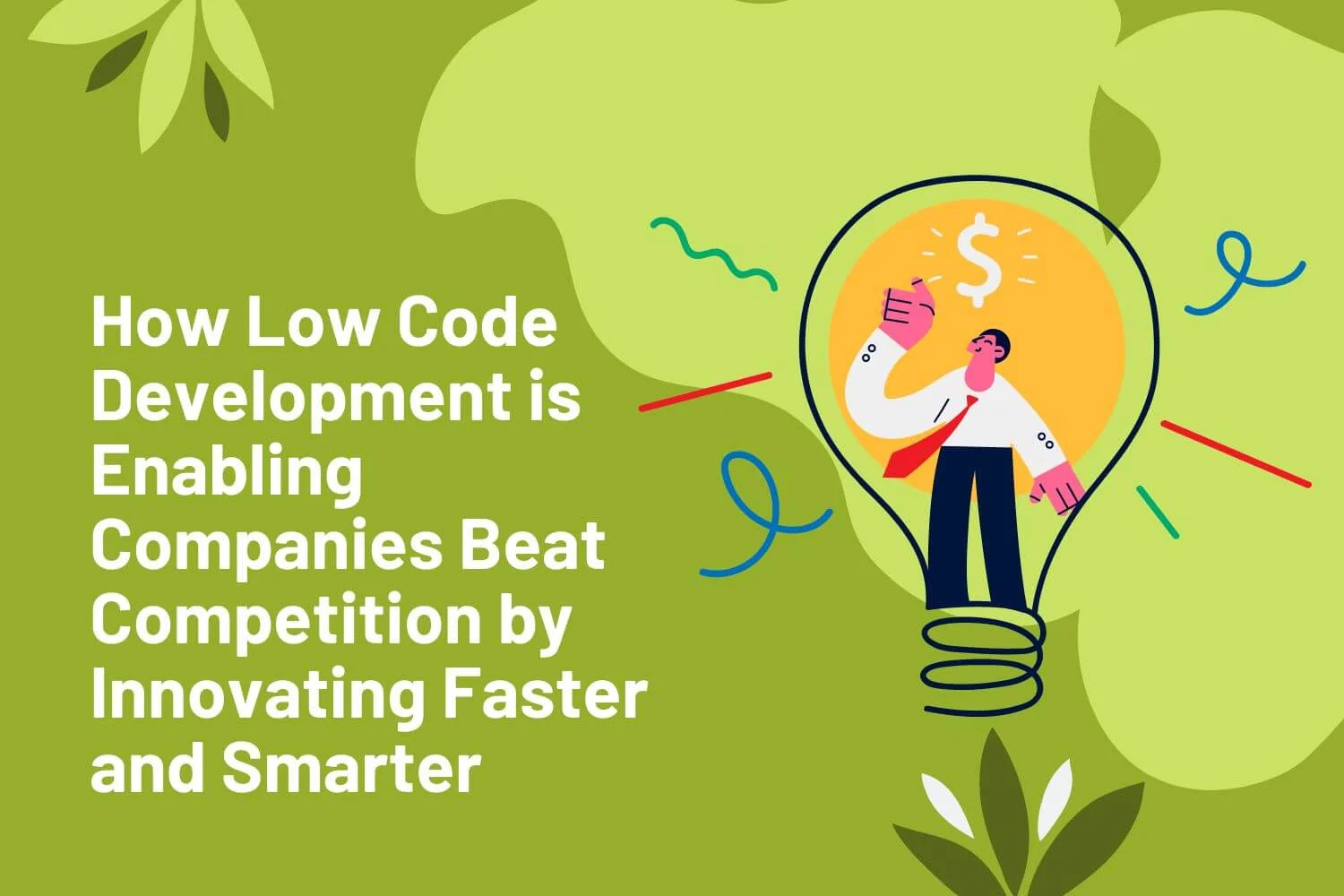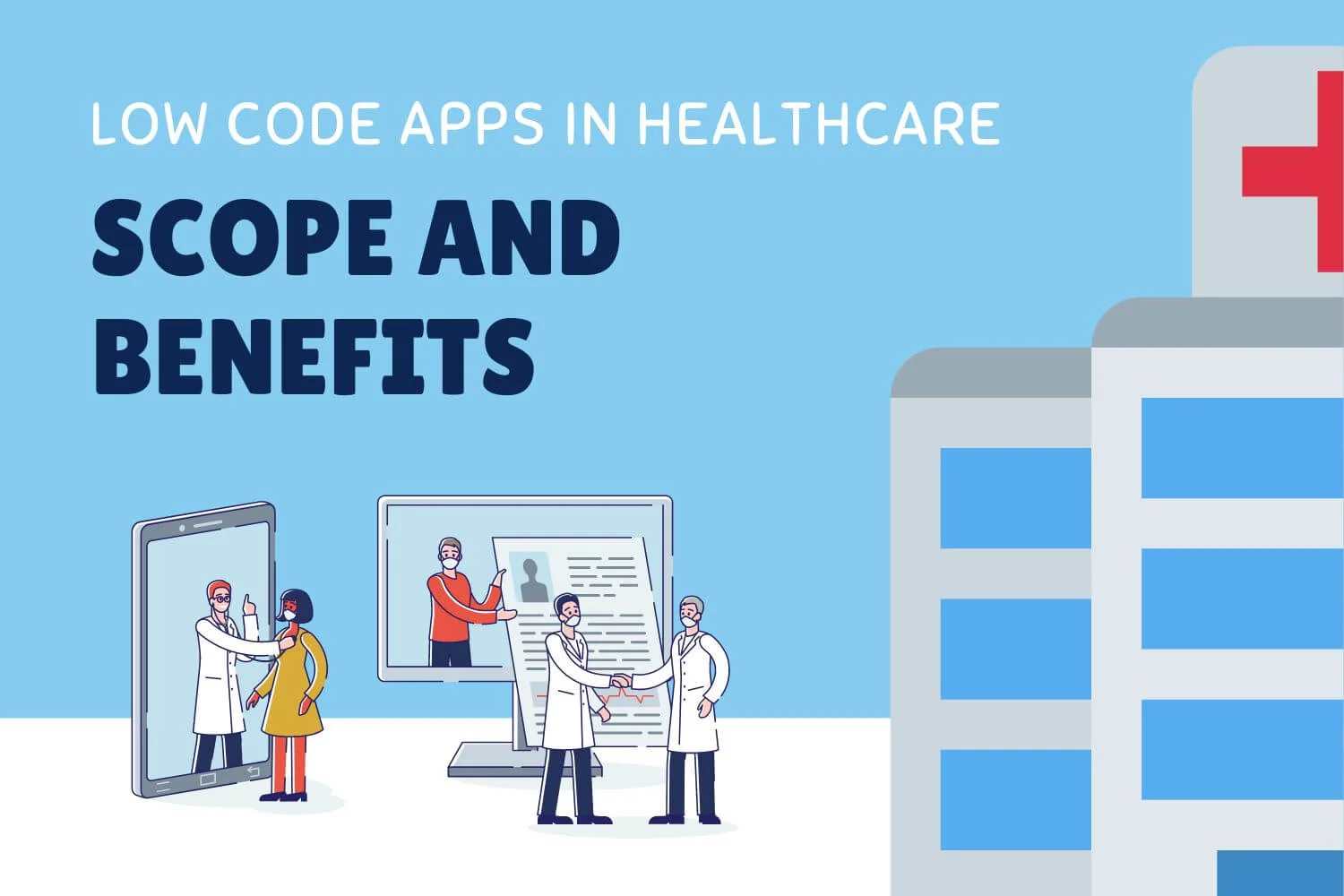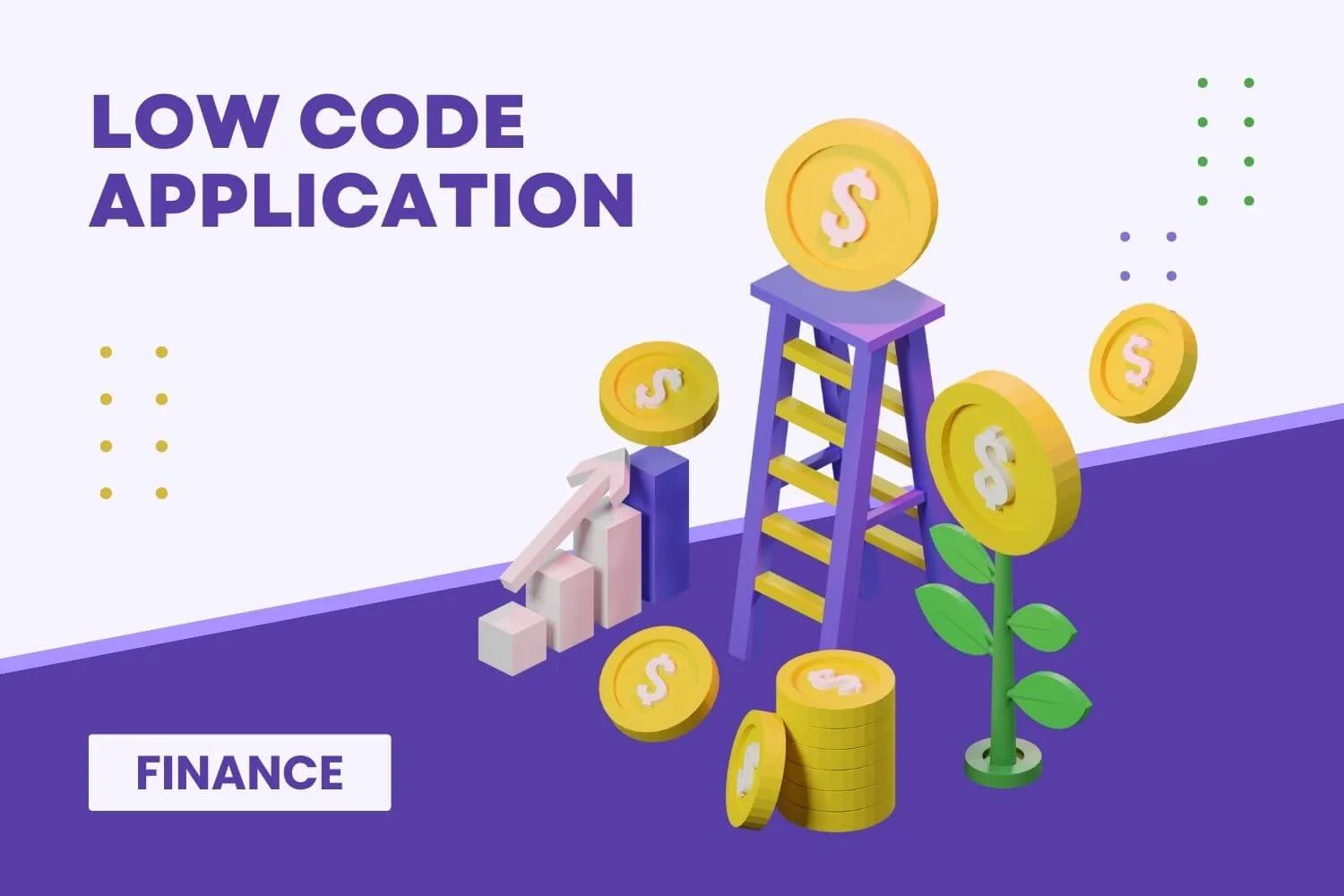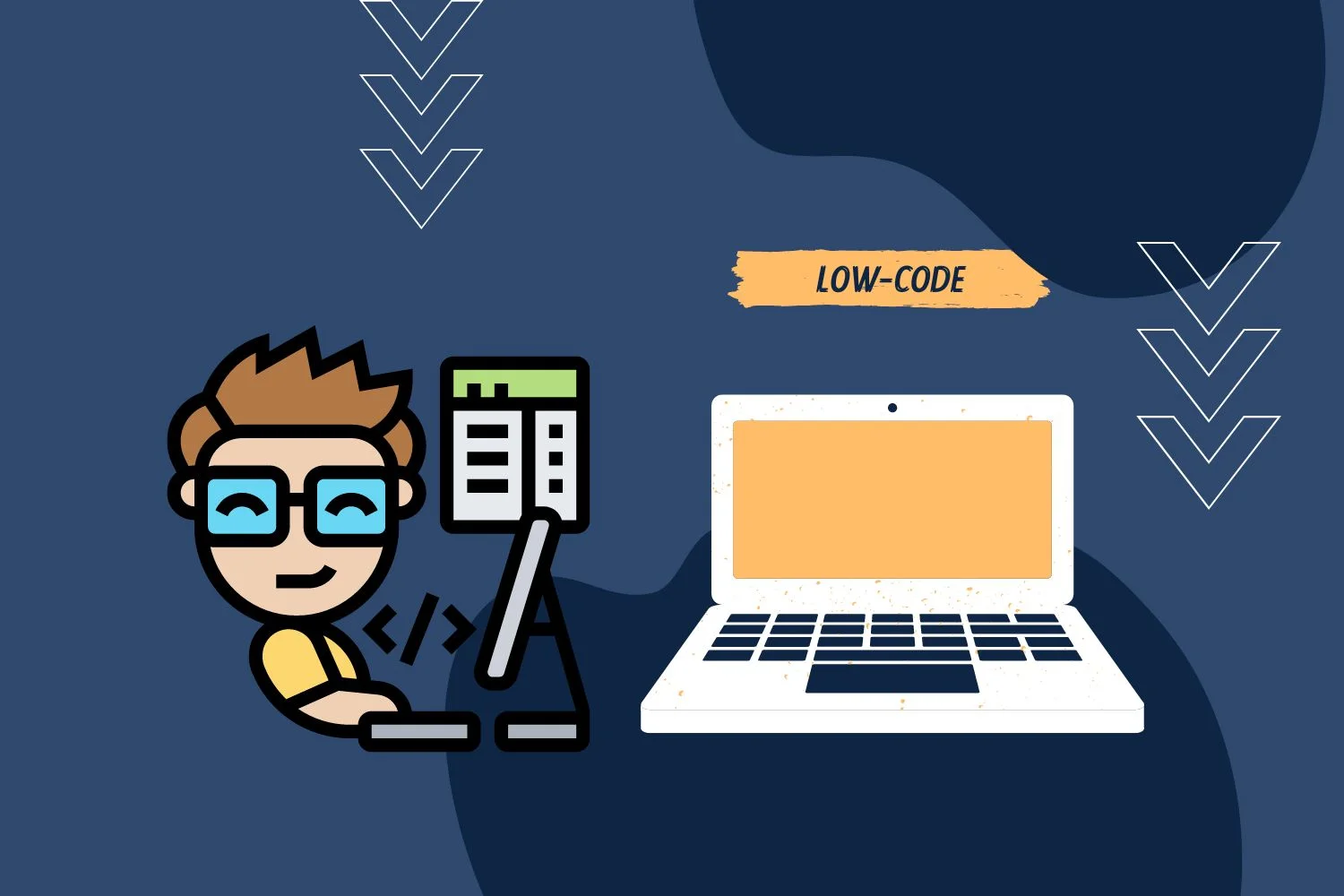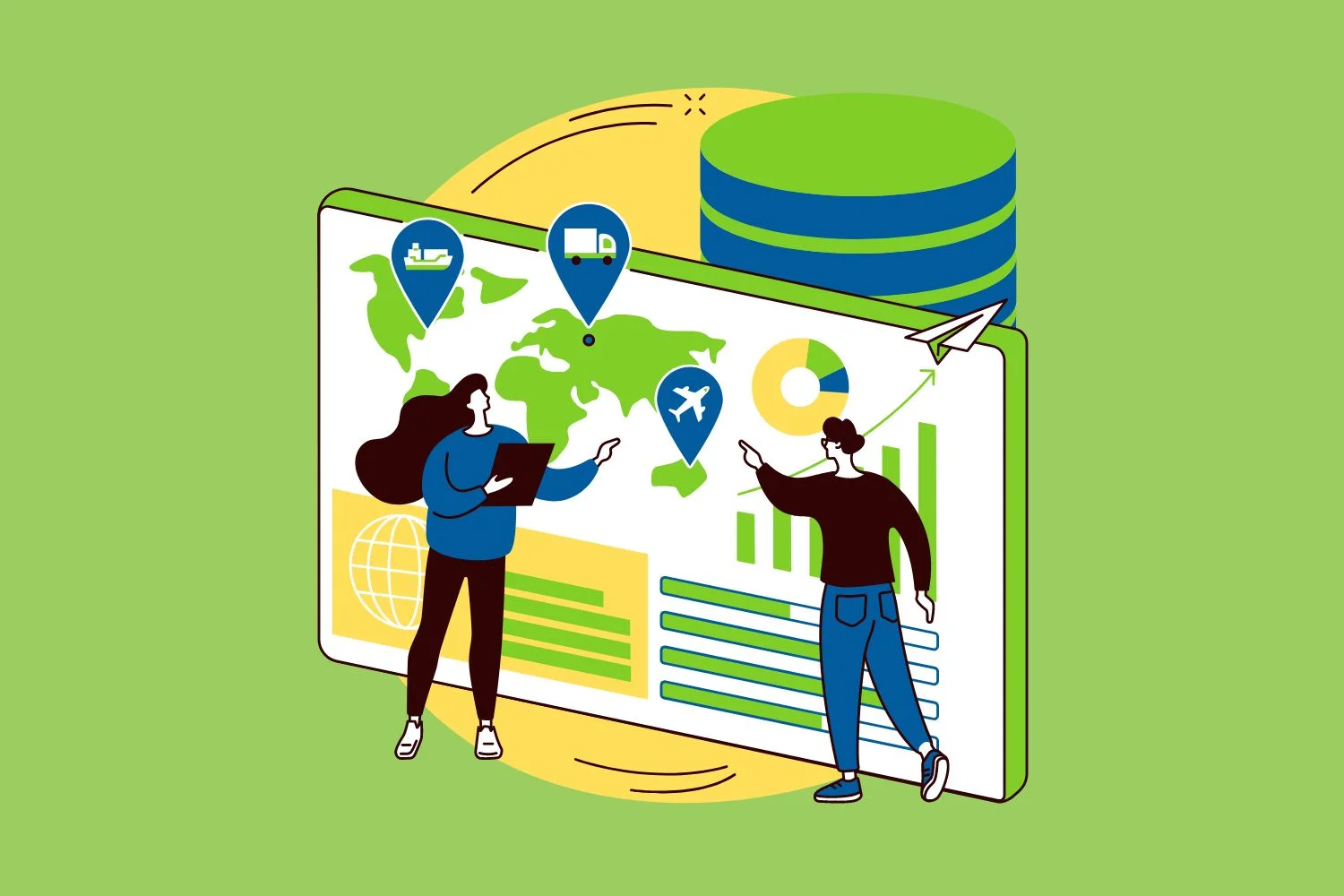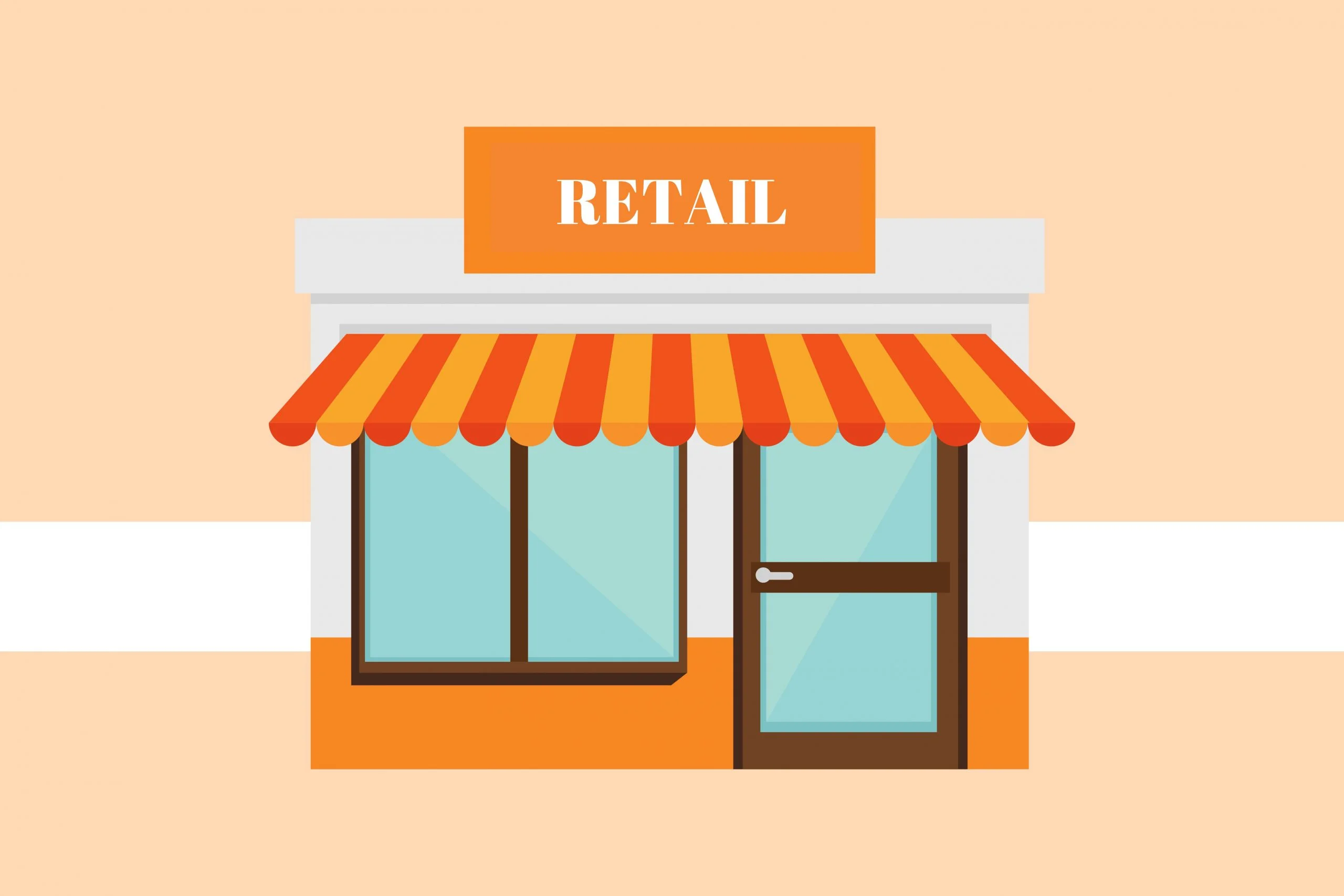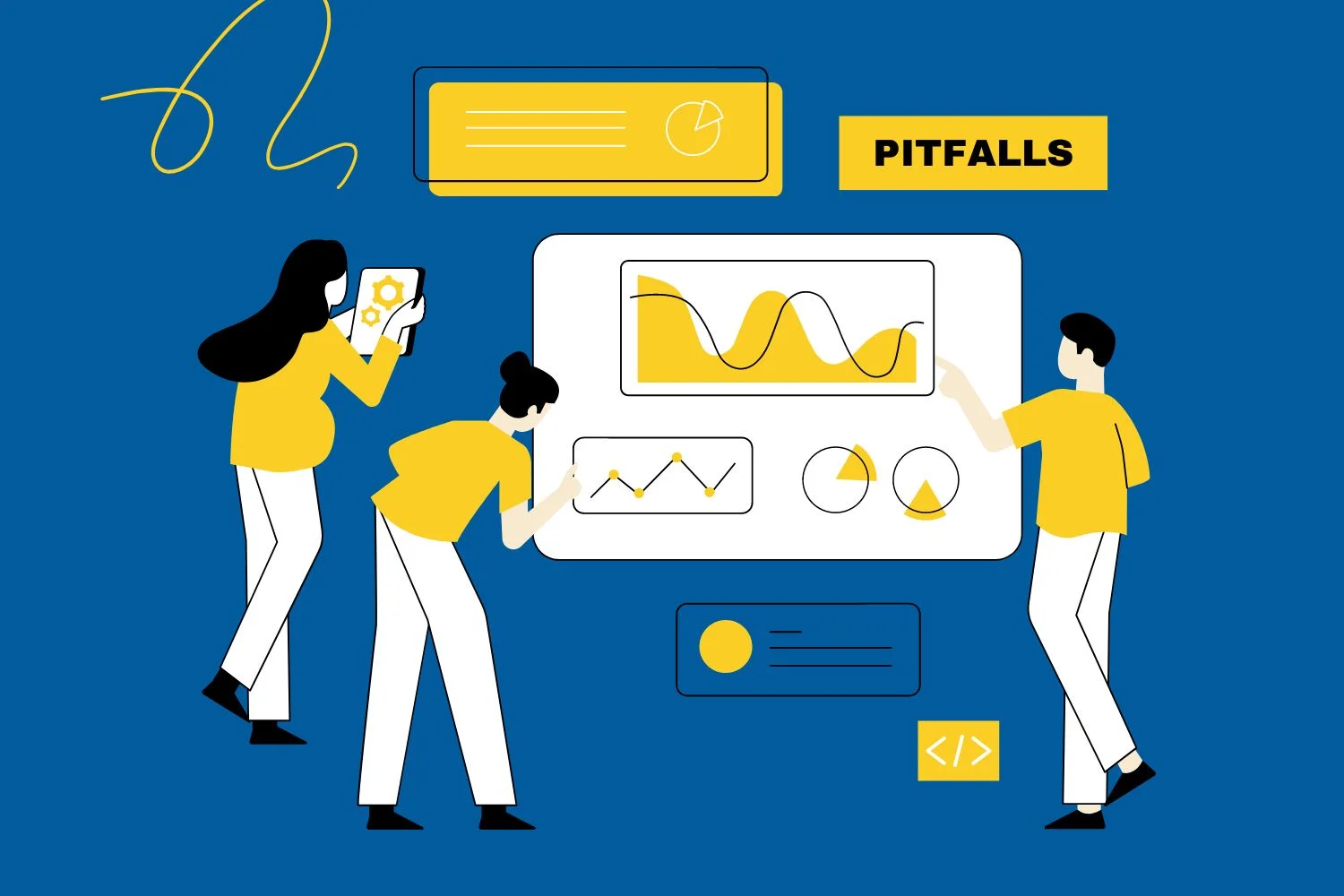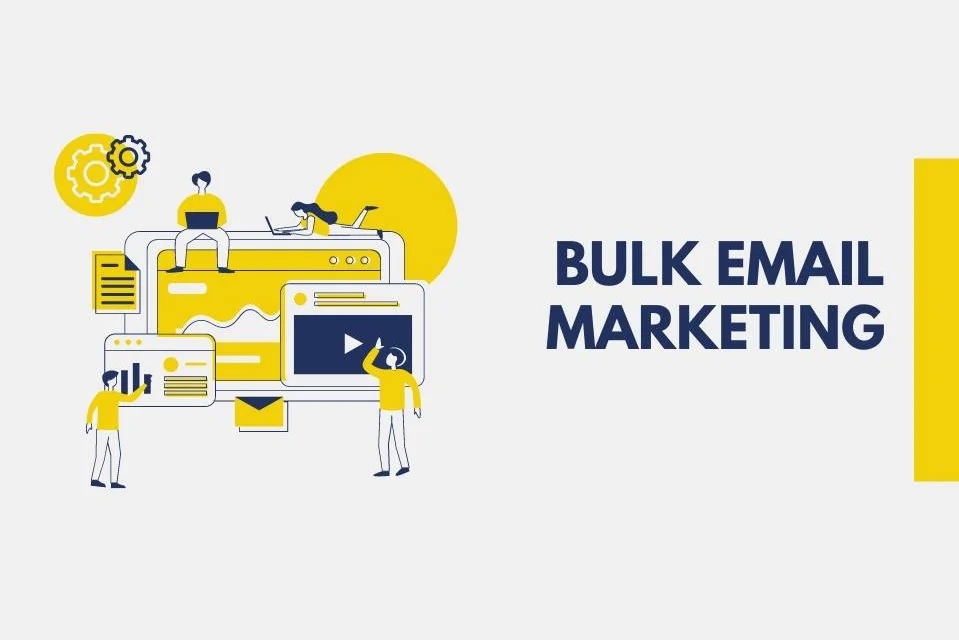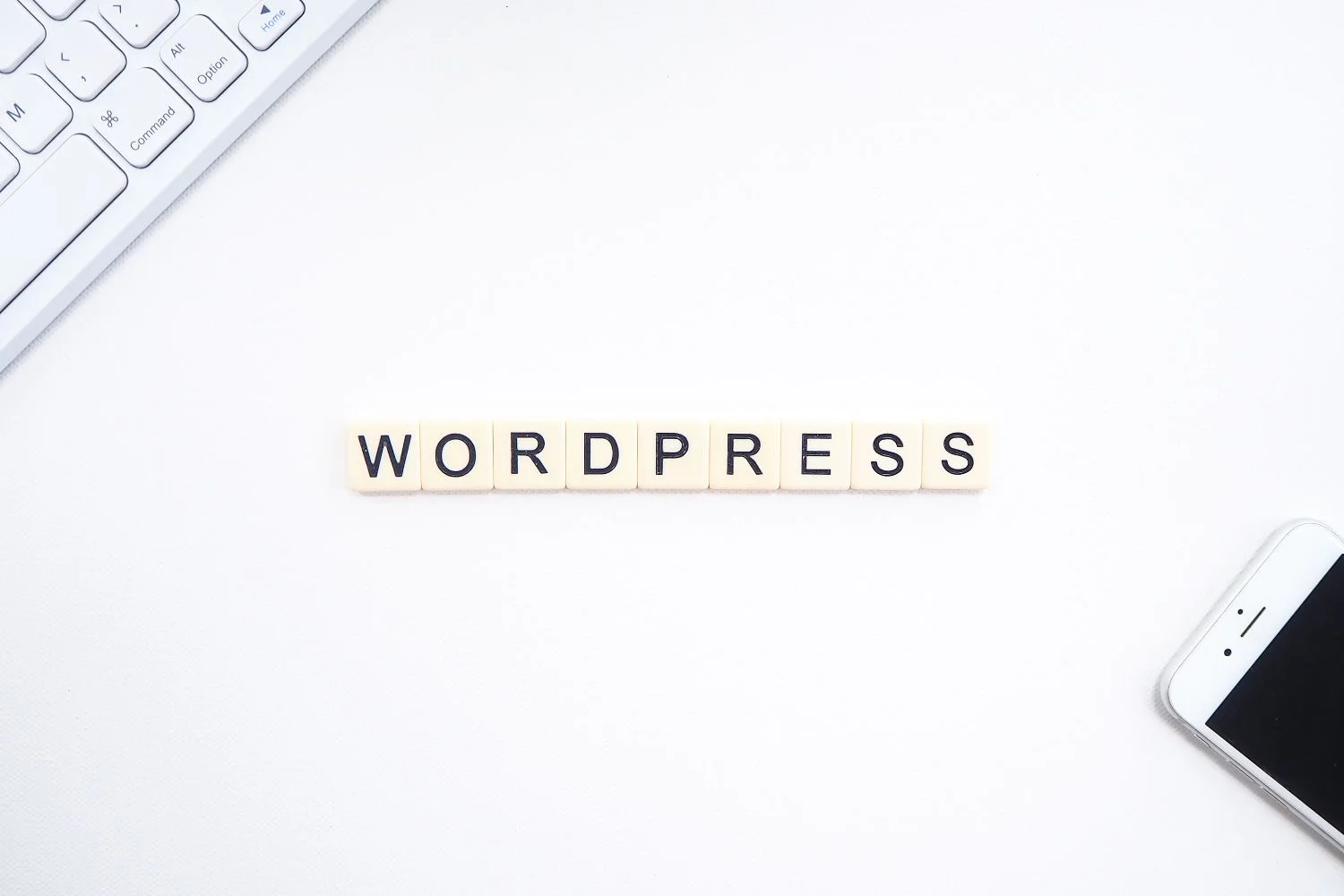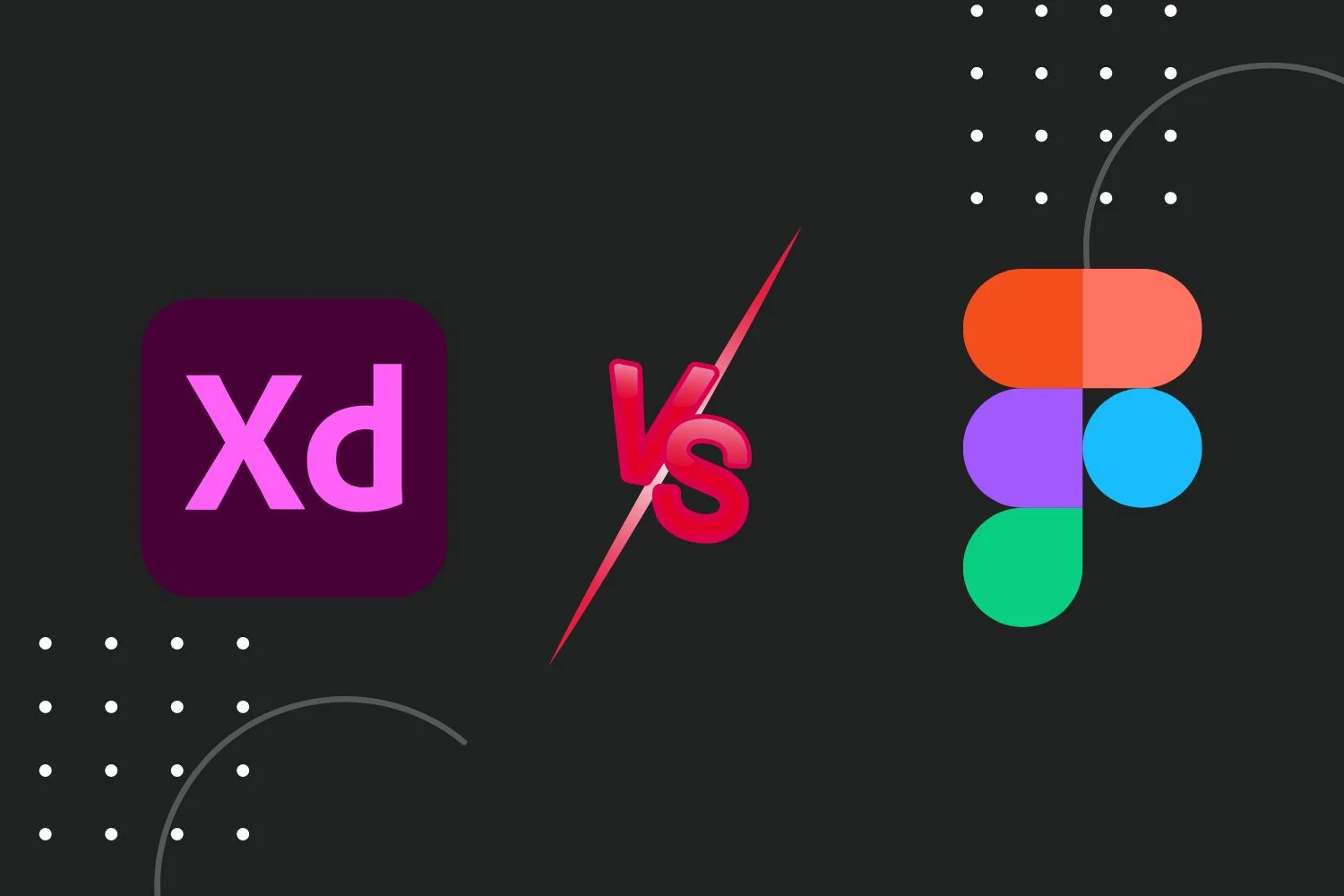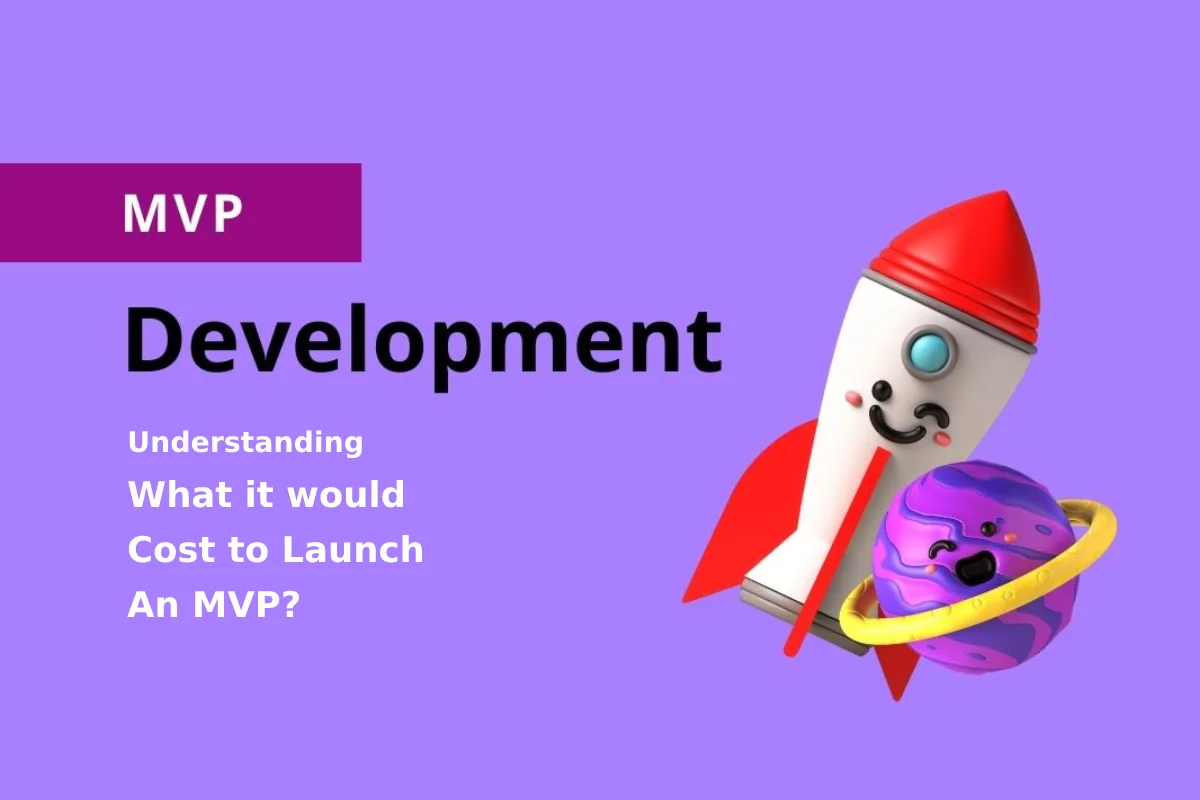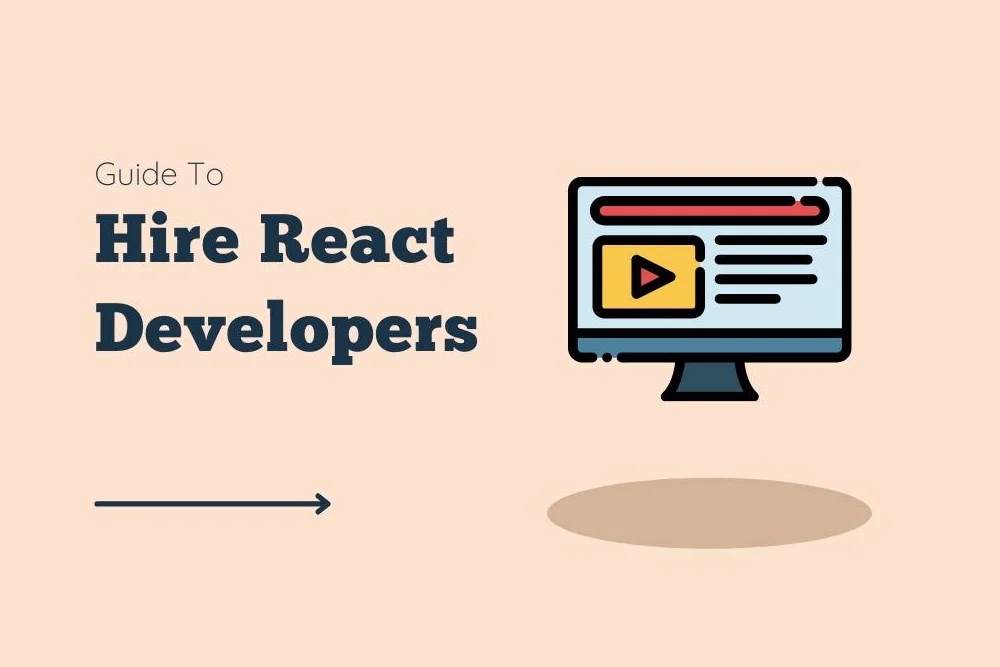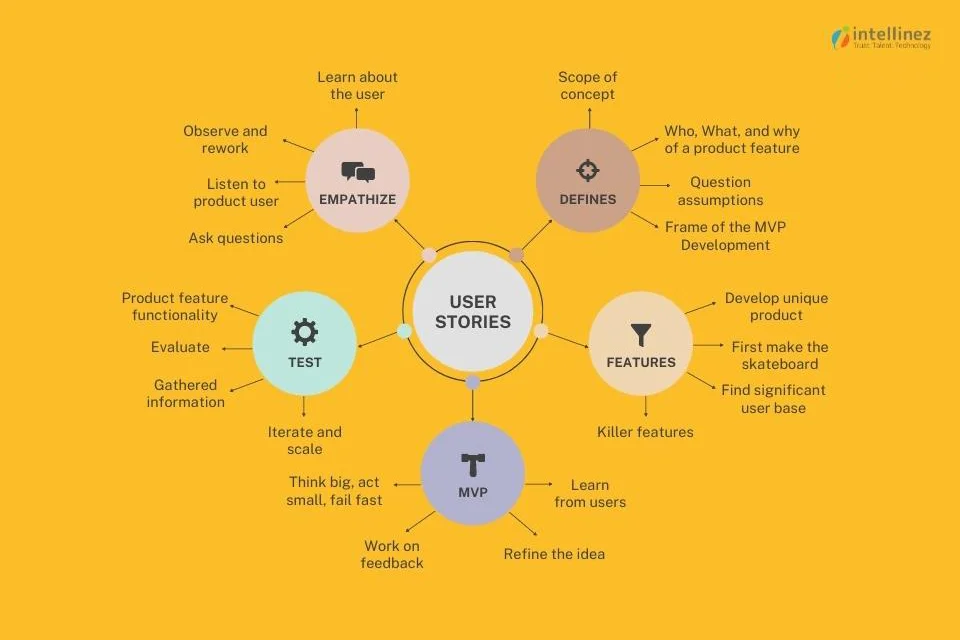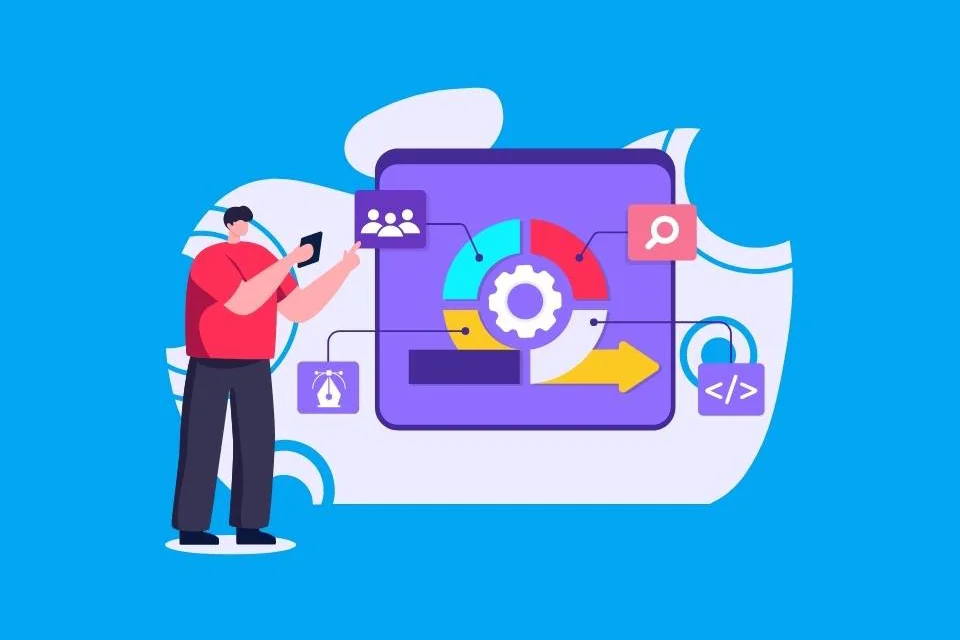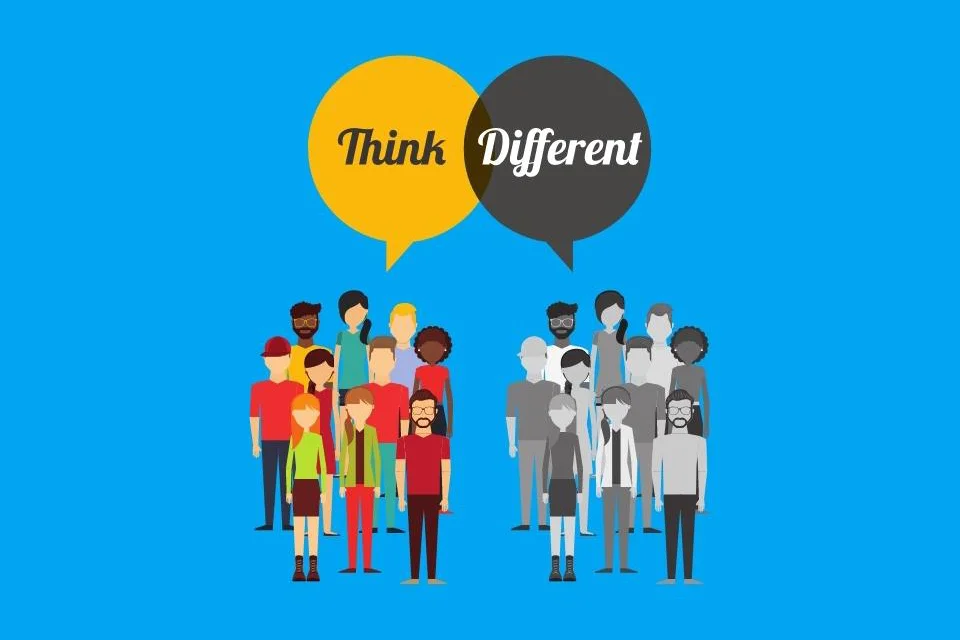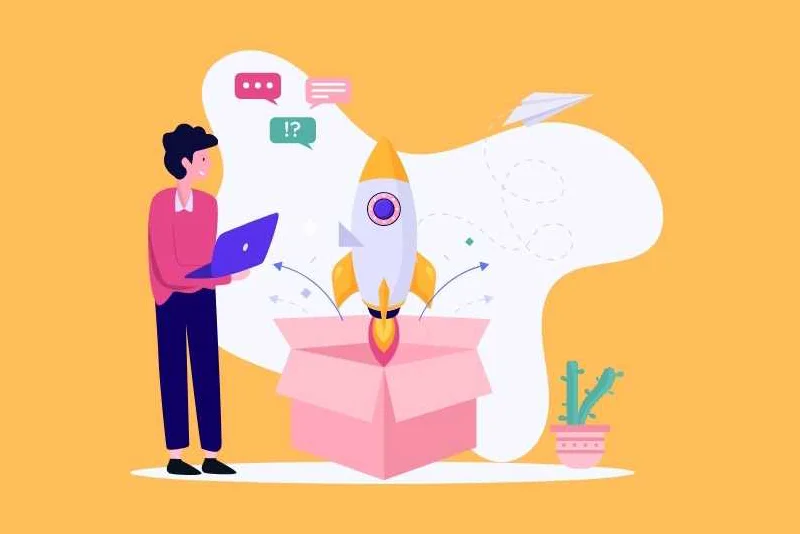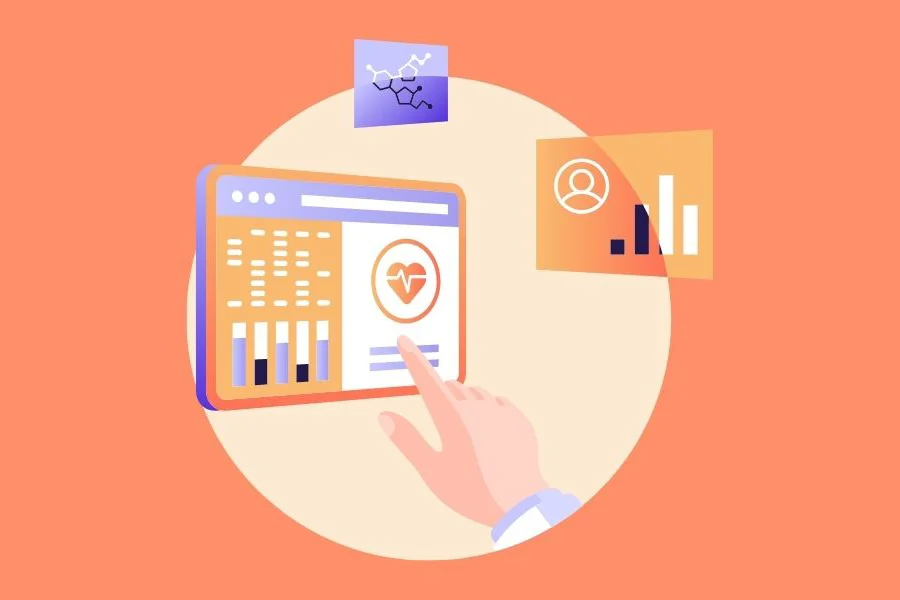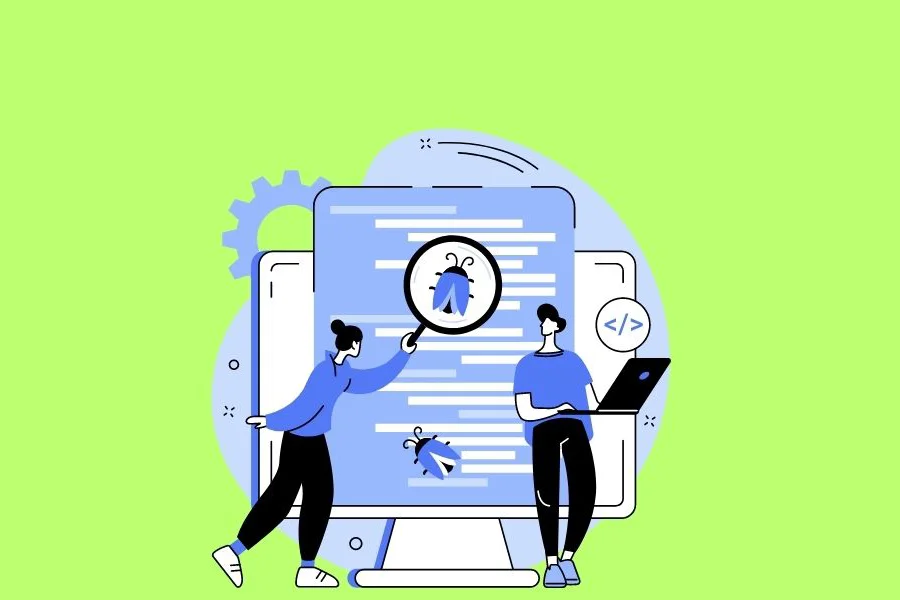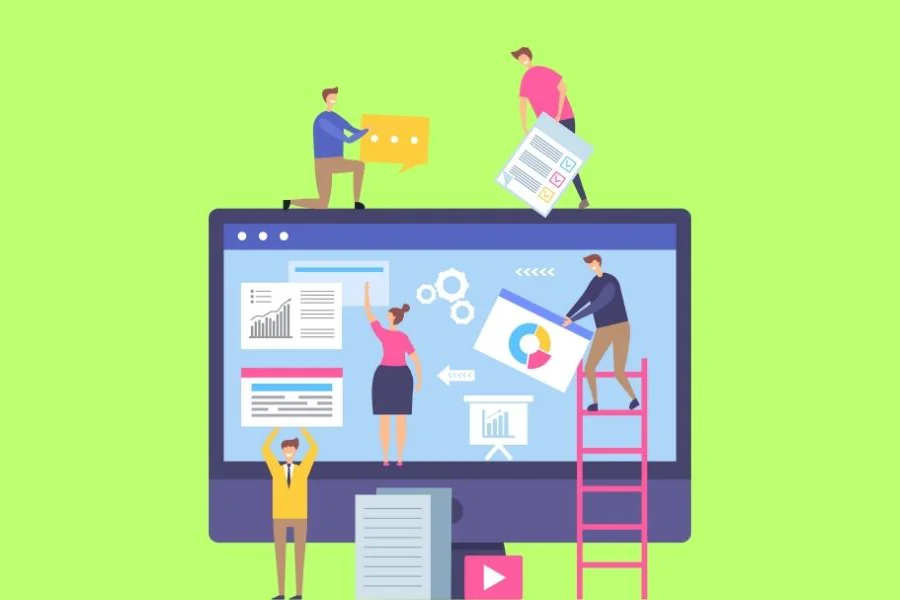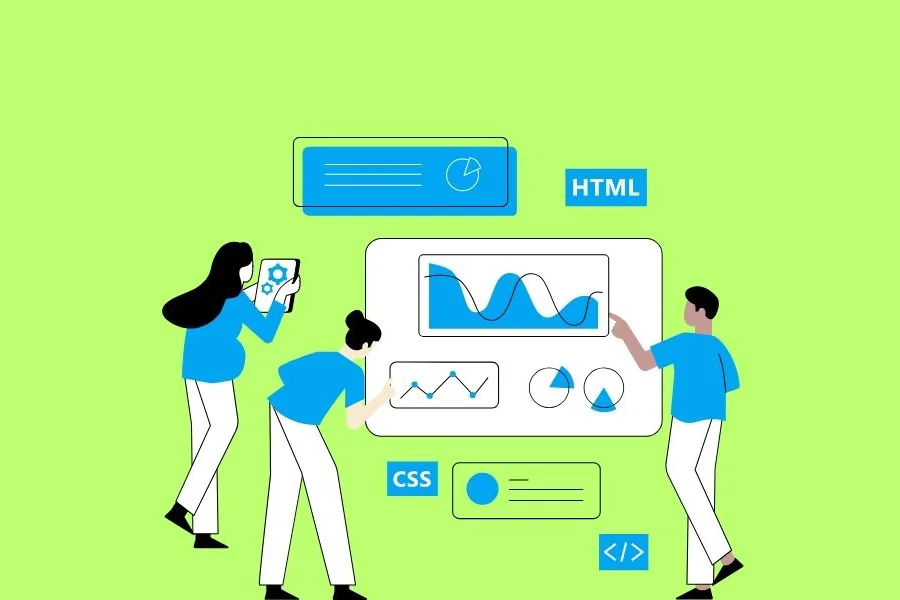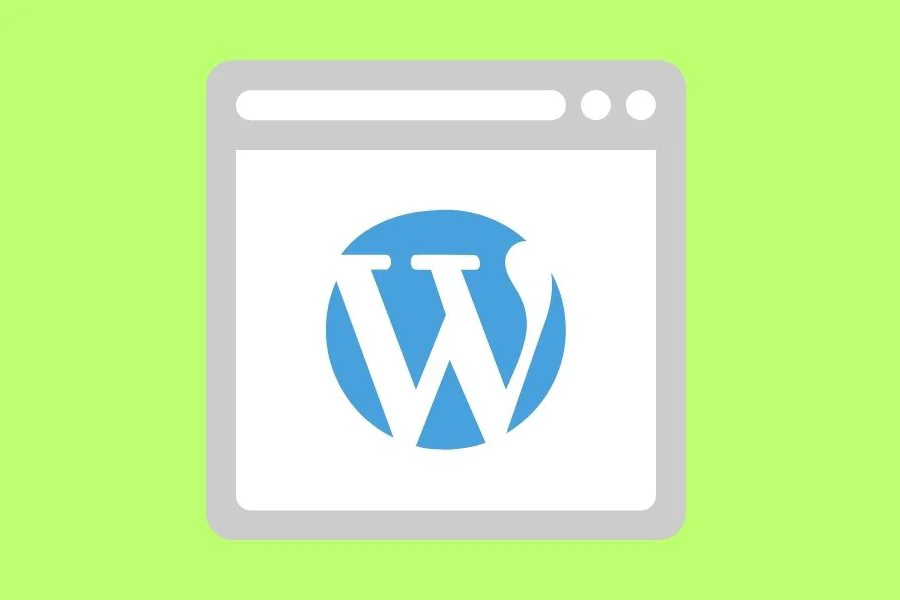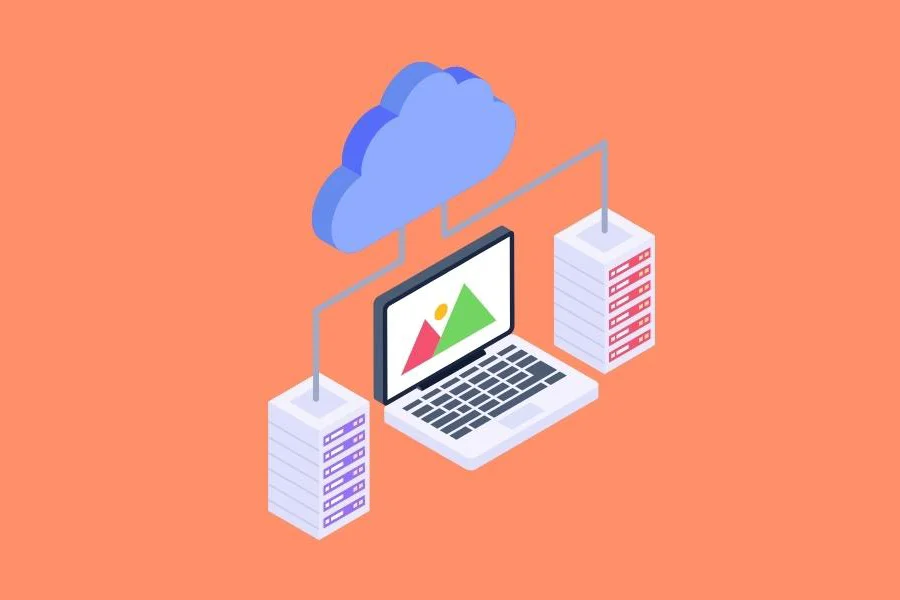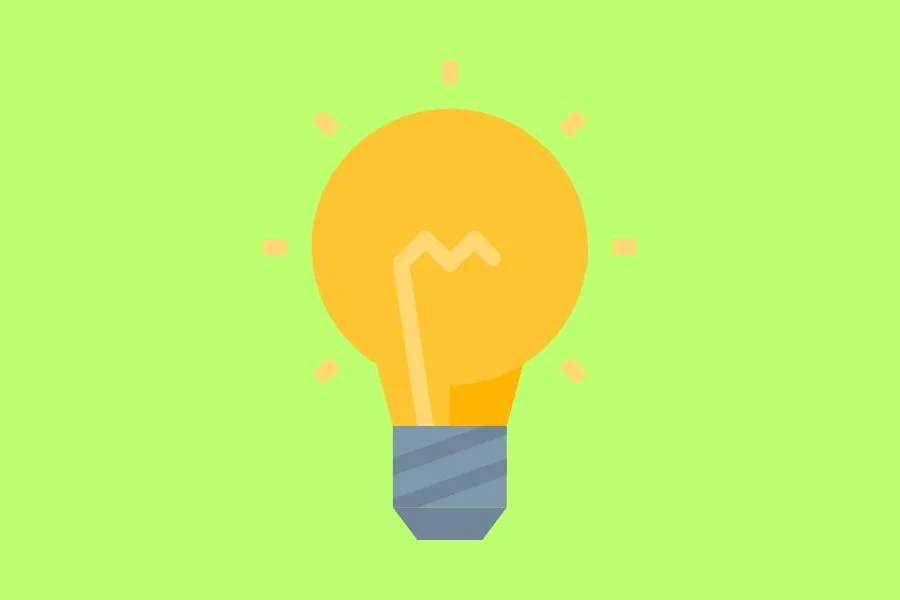Table of Contents
Creating successful software products isn’t easy. Many startups fail because they make things people don’t really need. Good products attract customers and keep them coming back for more, but turning an idea into a real product takes work.
This is where the product development lifecycle helps. It’s a step-by-step process that guides teams from the initial idea to the final product launch and then to maintenance. This approach helps everyone understand their role and how their work fits into the bigger picture.
Product managers use this cycle to:
- Organize the development process
- Keep track of progress
- Ensure all parts of the product come together smoothly
By following the product development lifecycle, teams can work more efficiently and increase their chances of creating a product that customers want and love.
This blog will help you understand the different phases and processes of the product development lifecycle. By learning about each stage, you’ll gain insights into how successful products are created from start to finish.
What is the Product Development Lifecycle?
The steps a product goes through from its original idea to its debut in the market and beyond are collectively called the Product Development Lifecycle a.k.a. PDLC. This lifespan includes every step needed to turn a product concept into a finished product that satisfies consumer demand and advances corporate objectives.
Significance of the Product Development Lifecycle
Structured Approach: The structured approach offers a methodical way to make sure that product development follows all essential processes that are taken to produce a high-quality final product.
Risk Management: It lowers the likelihood of later-occurring, expensive errors by assisting in the early identification and mitigation of possible issues during the product development lifecycle.
Efficient Resource Allocation: Better planning and resource allocation, including time, money, and resources, are made possible by efficient resource allocation.
Better Product Quality: Teams may concentrate on testing and quality assurance by adhering to a systematic procedure, which guarantees that the finished product meets or exceeds client expectations.
Market Alignment: It improves acceptability and success rates by ensuring that the product is built with a comprehensive grasp of consumer preferences, the competitive environment, and market demands.
Phases of Product Development Lifecycle

Phase 1: Ideation
The initial step of the product development lifecycle, known as the ideation phase, is dedicated to creating concepts for new goods and services. Through the exploration of creative concepts that fill in market gaps or meet consumer wants, this phase establishes the framework for the whole development process.
Key Activities in the Ideation Phase

Brainstorming: Brainstorming is a creative process where team members collaborate to produce a wide variety of ideas from many departments (e.g., product management, design, marketing, and engineering). The goal is to provide novel ideas for products by thinking beyond the box and considering different viewpoints.
Concept Development: The next stage after coming up with a long list of ideas is to hone them into workable concepts. This entails rating every concept according to standards including uniqueness, commercial viability, technological soundness, and compatibility with corporate objectives. The most promising concepts are then expanded into comprehensive product concepts that list the main attributes, features, and distinctive selling propositions of the suggested product.
Industry Research: To fully grasp the state of the industry today, including its trends, rivals, and gaps, in-depth market research is important. Insights into consumer preferences and potential markets for new items are provided by this study. Methods include evaluating competitor products, conducting surveys, and reviewing industry information.
Identifying Customer Needs: Creating a product that appeals to the target market requires a thorough understanding of the wants and pain areas of the client. This entails gathering direct input from prospective clients via focus groups, questionnaires, user observation, and interviews. The objective is to collect both quantitative and qualitative data in order to build a comprehensive consumer profile and comprehend their requirements, preferences, and actions.
Feasibility Analysis: It evaluates a product concept’s viability across three areas: technical, market, and financial.
- Technical feasibility assesses if the product can be developed with existing technology, resources, and skilled personnel.
- Market feasibility examines market demand, growth potential, and competitive positioning to ensure the product meets customer needs.
- Financial feasibility estimates development costs, sales revenue, profit margins, and ROI to confirm the product’s financial viability and potential for a positive return.
Phase 2: Concept Development and Planning
The goal of the Concept Development and Planning phase is to provide a clear strategy for the product’s development and to refine the concept. During this stage, the viability, practicality, and strategic alignment of the product idea with company objectives are verified.
Key Activities in the Concept Development and Planning Phase

Prototyping: Prototyping entails developing an early version of the product to visualize its design, functionality, and user experience. Depending on the complexity of the product, prototypes can range from simple wireframes and sketches to more interactive digital models. Prototyping aids in the identification of design flaws and collect early feedback from stakeholders and potential users.
Check out Estimating the Cost of MVP Development.
Proof of Concept (PoC): A PoC is a small-scale version of the product developed to test its feasibility and essential features. A successful PoC lowers uncertainty and guides subsequent development decisions.
Business Case: A business case outlines the costs, benefits, and anticipated return on investment (ROI) and serves as a thorough rationale for the product development. The target audience, price strategy, competitive environment, market analysis, and anticipated financial results are all included. Stakeholders may determine whether to move on with development and comprehend the value of the offer with the aid of the business case.
Creating a Project Plan: This entails creating a detailed project plan that details the budget, schedule, milestones, and important deliverables for the product development process. The project plan acts as a road map, directing the development team through every stage and guaranteeing that goals are in line with strategy.
Risk Assessment: It’s critical to recognize any hazards that influence the process of developing new products. Technical difficulties, changes in the market, resource shortages, and financial uncertainty are a few examples of these hazards. Anticipating potential roadblocks and formulating plans to overcome them is the aim.
Risk Management: Following the identification of potential issues, a strategy is developed to monitor, assess, and control these risks along the course of the product development process. To enable proactive risk handling, this strategy contains risk prioritizing, mitigation measures, backup plans, and ongoing evaluations.
Phase 3: Design and Development
During the Design and Development phase, the idea for the product is developed into a working, user-ready product. During this phase, the technical components are developed, the user interface and user experience (UI/UX) are designed, and the product is regularly tested and improved to ensure that it satisfies the requirements.
Key Activities of the Design and Development Phase

UI/UX Design: The goal of UI and UX design is to create a product that is aesthetically pleasing, intuitive, and easy to use. The process of creating a product’s layout, color schemes, typography, and iconography is known as user interface design (UI design). Total user experience is the main emphasis of UX design, which makes sure the product is user-friendly and satisfies demands. In order to see how the product will appear and feel, this process involves making interactive prototypes, mockups, and wireframes.
Functionality Design: It is the process of identifying the essential characteristics and functions of the product. To make sure that the functionality of the product complies with user requirements and corporate goals, the design team works in tandem with stakeholders. This includes developing the product architecture, integrating the required tools, and defining how certain features will function.
Engineering Development: The process of engineering development includes turning the product design into a functional product. The technical team develops the required databases, server-side apps, and algorithms in addition to constructing the front-end and back-end systems. Coding, software development, and the integration of many technological components are all included in this phase.
Technical Development: It is the process of putting in place the servers, databases, and APIs needed to guarantee a smooth operation. The development team furthermore concentrates on enhancing scalability, security, and speed to manage user traffic and guarantee a seamless user experience.
Iterative Testing: To find defects, usability difficulties, and performance concerns, continuous testing is carried out throughout the development process. This covers a range of testing methodologies, including system, user acceptability, unit, and integration testing (UAT). Ensuring the product works as planned and offers a top-notch user experience is the aim.
Refinement: The development team makes the required changes and enhancements to the product based on input from testing. This iterative testing and improvement process makes the product polished and launch-ready by helping to find and fix problems early on.
Phase 4: Testing and Validation
The testing and validation phase ensures that the product meets all the quality standards and is ready for release. This phase involves various types of testing to identify and fix any issues, validate the product performance, and ensure it meets user experience and business requirements.
Key Activities in the Testing and Development Phase

Different Types of Testing: This includes several stages of testing to ensure product readiness. Alpha Testing is conducted to identify and fix major bugs and assess core functionalities. Beta testing involves external users gathering real-world feedback on performance and usability, highlighting any remaining issues. User testing observes actual users interacting with the product to evaluate its usability and design providing insights for further improvements.
Quality Assurance Processes: QA processes are implemented throughout the testing phase to ensure the product meets the required quality standards. This includes systematic testing of all features, functionalities, and performance metrics to identify and resolve any defects or inconsistencies. QA processes involve automated and manual testing techniques, including functional, regression, load, and security testing, to ensure the product is robust, secure, and reliable.
Gathering Feedback: Feedback is collected from testers, users, and stakeholders during the testing phase to understand any issues, suggestions, or improvements needed. This feedback is crucial for identifying bugs, usability problems, and areas where the product can be enhanced.
Making Improvements: Based on the feedback gathered, the development team makes necessary changes and improvements to the product. This iterative process of testing, feedback, and refinement ensures the product is continuously improved and optimized for the best user experience and performance.
Phase 5: Launch and Commercialization
The Launch and Commercialization phase focuses on introducing the product to the market and driving its adoption among target customers. This phase involves detailed planning and execution to ensure a successful product launch and sustained market presence.
Key Activities in the Launch and Commercialization Phase

Preparing for Market Entry: Preparing for market entry involves finalizing all aspects necessary for a successful product launch. This includes setting up production, ensuring inventory availability, training customer support teams, and establishing the logistics needed for distribution. The goal is to ensure that everything is in place for a smooth product rollout and customer onboarding.
Marketing Strategies and Promotional Activities: Developing effective marketing strategies is crucial to creating awareness and generating demand for the product. This includes crafting compelling messaging, designing promotional campaigns, and leveraging various marketing channels such as digital marketing, social media, content marketing, public relations, and influencer partnerships. The aim is to attract potential customers, build excitement, and drive sales.
Sales Channels and Distribution: Identifying and setting up the right sales channels and distribution network are essential for reaching target customers effectively. This includes choosing between direct sales, e-commerce platforms, retail partnerships, or distributors, depending on the product and market. An efficient distribution strategy ensures the product is accessible to customers in key markets and supports smooth sales operations.
Phase 6: Post-Launch Evaluation and Support
The Post-Launch Evaluation and Support phase focuses on assessing the product performance after it has been introduced to the market and providing ongoing support to customers. This phase is essential for ensuring satisfaction, addressing issues promptly, and enhancing the product based on user feedback.
Key Activities of the Post-Launch Evaluation and Support Phase

Monitoring Product Performance: This involves tracking key performance indicators (KPIs) such as sales figures, customer acquisition rates, user engagement, and retention metrics. Monitoring helps identify trends, detect any issues early, and assess whether the product is meeting its business objectives. Regular analysis provides insights into how the product is performing in the market and highlights areas for potential improvement.
Customer Support and Service: Providing excellent customer support is crucial for maintaining customer satisfaction and loyalty. This includes offering assistance through various channels such as email, chat, phone, and social media. Customer support teams handle inquiries, troubleshoot problems, and provide solutions to ensure a positive user experience. Effective customer service helps build trust and enhances the overall perception of the product.
Continuous Improvement and Updates: Continuous improvements involve regularly updating the product to fix bugs, enhance features, and introduce new functionalities based on user feedback and market demands. This iterative process ensures the product remains competitive, meets evolving customer needs, and adapts to changing market conditions. Regular updates help maintain user engagement and drive long-term success.
Challenges in the Product Development Lifecycle
Product development is a complex process that involves several stages, each with its own set of challenges. Identifying common obstacles and implementing strategies to overcome them is crucial for successful product development.
Common Obstacles and Pitfalls
- Lack of Clear Vision: Ambiguity in product goals or misalignment among stakeholders can lead to confusion and delays.
- Resource Constraints: Limited time, budget, or manpower can hamper development efforts.
- Technical Challenges: Unforeseen technical issues or integration problems can disrupt the development process.
- Poor Market Fit: Developing a product without adequate market research can result in low demand and poor performance.
Tips for Overcoming Challenges During Different PDLC Phases
Optimizing the Ideation Process
A strong ideation process is key to generating innovative and viable product concepts.
Best Practices
- Diverse Teams: Involve team members from various departments to get diverse perspectives and ideas.
- Structured Brainstorming Sessions: Use frameworks like mind mapping or SCAMPER to guide brainstorming and ensure productive sessions.
- Through Market Research: Conduct detailed market analysis to understand customer needs, competition, and industry trends.
Tools and Techniques for Idea Management
- Idea Management Software: Tools like Trello, Asana, and Miro help organize and prioritize ideas.
- Regular Review Sessions: Schedule regular sessions to evaluate and refine ideas based on feasibility and potential impact.
Streamlining the Development Phase
Efficiency in the development phase is crucial to bringing a product to market quickly and effectively.
Best Practices
- Agile Development: Adopting agile methodologies allows for iterative development, frequent testing, and faster response to change.
- Scrum and Kanban: These frameworks help teams manage workloads efficiently, prioritize tasks, and maintain a steady development pace.
Tools and Techniques
- Integrated Teams: Encourage collaboration among design, engineering, marketing, and sales teams to ensure all aspects of the product are aligned and optimized.
- Regular Stand-Ups and Meetings: Hold regular check-ins to facilitate communication and address any issues promptly.
Enhancing Testing and Feedback Loops
Effective testing and feedback loops ensure that the product is refined and meets user expectations before launch.
Best Practices
- Automated Testing: Implementing tools like Selenium or TestComplete to run repetitive tests quickly and efficiently, reducing manual efforts and time.
Tools and Techniques
- User Feedback Surveys: Collect structured feedback through surveys, interviews, or usability tests to gain insights into the user experience.
- Data Analysis Tools: User analytics platforms to track user behavior and identify areas for improvements.
Efficient Launch Strategies
A well-planned launch strategy maximizes product visibility and adoption in the market.
Best Practices
- Comprehensive Plan: Develop a detailed plan that outlines the target market, pricing strategies, promotional activities, and sales channels.
- Pre-Launch Marketing: Generate buzz and anticipation with pre-launch campaigns, teasers, and early access offers.
Tools and Techniques
- Digital Channels: Utilize social media, email marketing, content marketing, and online ads to reach a wider audience.
- Influencer Collaborations: Partner with influencers to increase product visibility and credibility.
Continuous Improvement Post-Launch
Ongoing improvements after the product launch are essential to maintain relevance and meet evolving functionalities.
Best Practices
- Regular Updates: implement regular updates to enhance features, fix bugs, and introduce new functionalities.
- A/B Testing: Use A/B testing to evaluate new features or changes and determine what works best.
Tools and Techniques
- Feedback Loops: Establish mechanisms for continuous feedback, such as in-app surveys, customer reviews, and social media monitoring.
- Customer Support Channels: Provide multiple channels for customers to share their feedback and experiences, helping identify areas for improvement.
Conclusion
Understanding the Product Development Lifecycle (PDLC) is crucial for any team aiming to create successful products that meet market needs and drive business growth. The PDLC provides a structured approach, guiding teams from ideation through to post-launch evaluation. Each phase plays a critical role in transforming a concept into a market-ready product. By following this systematic process, teams can ensure better resource allocation, risk management, and product quality, all while staying aligned with market demands. Moreover, continuous iteration and improvement, based on customer feedback and market trends, are essential for maintaining a product’s relevance and success over time.
Adopting best practices and tools at each stage of the PDLC helps streamline processes, foster innovation, and enhance collaboration across cross-functional teams. Ultimately, mastering the PDLC not only reduces the chances of failure but also maximizes the potential for delivering products that delight customers and achieve strategic business objectives.
Ready to Transform Your Product Development Strategy?
Discover how Intellinez Systems can guide you through every phase of the Product Development Lifecycle (PDLC). Our expertise ensures a seamless journey from ideation to launch and beyond, helping you build market-ready products that meet customer needs and drive business growth. Let us help you optimize your development process, manage risks, and enhance product quality with a structured approach tailored to your unique requirements. Partner with Intellinez Systems today and take the first step towards successful product innovation. Reach out now to learn more!
-
What is the Product Development Lifecycle (PDLC)?
PDLC is a structured process that guides the development of a product from initial idea through to market launch and beyond. It includes all steps necessary to transform a concept into a finished product that meets consumer needs.
-
Why is the PDLC important?
PDLC is important because it ensures a systematic approach to product development, which helps in reducing risks, optimizing resources, improving product quality, and aligning the product with market needs.
-
What are the key phases of the PDLC?
The key phases of the PDLC are Ideation, Concept Development and Planning, Design and Development, Testing and Validation, Launch and Commercialization, and Post-Launch Evaluation and Support.
-
How does the PDLC help in risk management?
PDLC helps in risk management by identifying potential risks early in the development process and implementing strategies to mitigate them, thereby reducing the likelihood of costly errors later on.
-
What are some best practices for optimizing the development phase?
Best practices for optimizing the development phase include adopting agile methodologies, fostering cross-functional team collaboration, and using automated testing tools to streamline processes and enhance product quality.
- tawa555 login
- https://www.10ml.com.br/orcamento/
- https://www.nwc10lab.com/validar-ideas-digitales/
- https://www.unvi.es/pago-seguros/
- https://kumarskitchen.com/medien/
- https://cdocencia.xoc.uam.mx/
- rejekibet
- https://mgapress.com.br/assessoria-de-imprensa/
- https://www.intersmartsolution.com/erp-solutions/
- https://cvworld.in/seo-services/
- slot pulsa 5000
- slot deposit 5000
- slot deposit pulsa
- https://ksquare99.com/culture.html
- https://intersmart.ae/our-works/
- https://astrologerparduman.com/blogs/
- https://gluesys.com/

































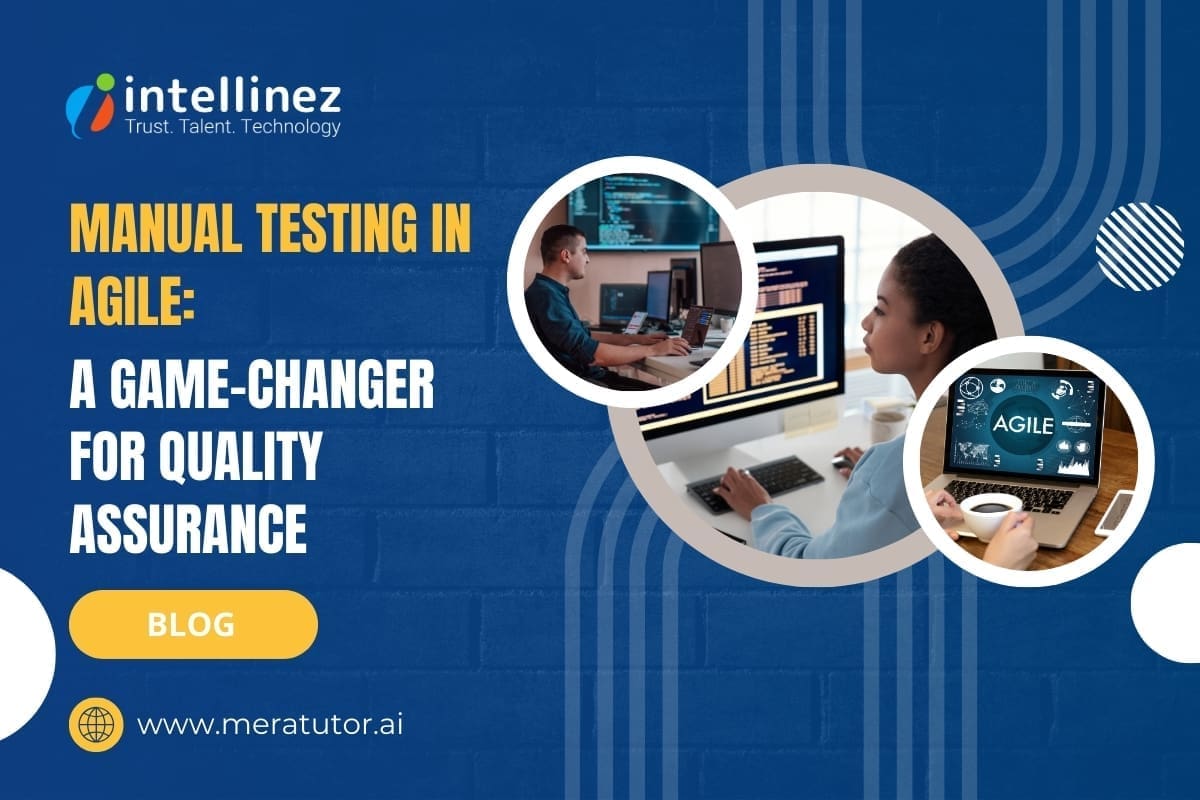



![A Comprehensive Guide to AWS SaaS Architecture [Diagram Included] 88 Aws SaaS Architecture](http://www.intellinez.com/wp-content/uploads/2024/08/Title-image.jpg)










